Archive for the ‘Tasmania (AU)’ Category
Wednesday, November 23rd, 2011
‘The axe had never sounded’…
.
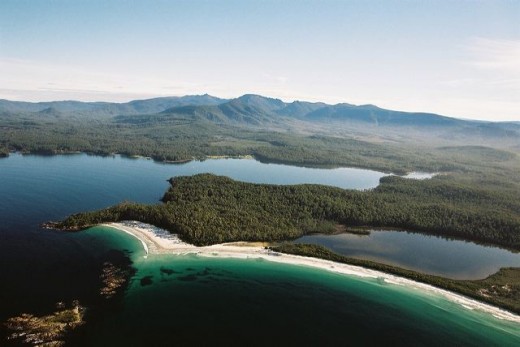 Unprotected ancient native forests around Tasmania’s Recherche Bay Unprotected ancient native forests around Tasmania’s Recherche Bay
(Photo by Bob Brown)
.
Despite Tasmania’s Inter-governmental Agreement (IGA) on 7th August 2011 assuring immediate logging moratorium of native forests in agreed reserves, Forestry Tasmania continues to eco-rape and pillage protected native forests in defiance of this agreement.
IGA Clause 25 states:
‘The State will immediately place the 430,000 hectares of native forest identified in Attachment A (other than any areas that are not State forest), from the 572,000 hectares nominated by ENGOs through the Statement of Principles process, into Informal Reserves. The boundaries of this 430,000 hectares were verified through an independent verification process.’
The southern forests around Recherche Bay were agreed to be included into the Informal Reserves through the Independent Verification Process.
So by embarking on new logging in these Informal Reserves, clearly Forestry Tasmania is in breach of the IGA and operating out of the control of the Tasmanian Government. Forestry Tasmania is logging Tasmania like there’s no tomorrow, because it knows there it has no tomorrow. The business is seriously loss-making. It’s continuing unfettered destruction of Tasmanian native forests is akin to the calculated genocide of Sri Lankan Tamils in May 2009 by the Sinhalese Sri Lankan dictator Mahinda Rajapaksa. Forestry Tasmania’s manic mindset has it logging and woodchipping native forests until they’re all decimated. And Lala’s Labor Government doesn’t have the gumption to enforce the moratorium on its own renegade department.
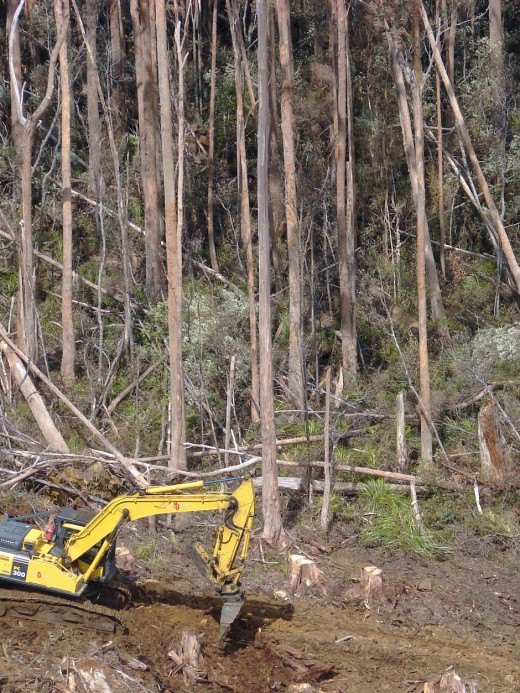 Forestry Tasmania getting stuck into native forests near Tasmania’s Recherche Bay, May 2011
[Source: ABC, ‘Bid for forest peace funding’, 20110519, ^http://www.abc.net.au/news/stories/2011/05/18/3220585.htm?site=hobart] Forestry Tasmania getting stuck into native forests near Tasmania’s Recherche Bay, May 2011
[Source: ABC, ‘Bid for forest peace funding’, 20110519, ^http://www.abc.net.au/news/stories/2011/05/18/3220585.htm?site=hobart]
.
Not only is this organisation out of control, it has no market for its woodchip product. The logs are trucked to woodchipping mills only to be stockpiled with nowhere to go. With no income, it is a business heading for collapse. Unpaid wages will likely remain that way, when the doors are finally closed up. Meanwhile Tasmania’s remaining old growth forests are being logged and the ancient vital ecology decimated.
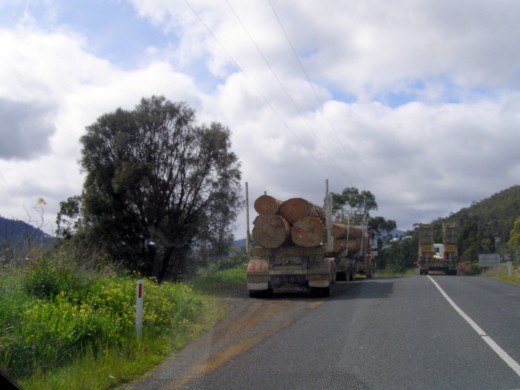 Loaded logging truck (New Norfolk, 20110929)
(Photo by editor, free in public domain) Loaded logging truck (New Norfolk, 20110929)
(Photo by editor, free in public domain)
.
Conservationists are this morning conducting a protest in a logging area in the far south of Tasmania, where world heritage value forests are being clearfelled.
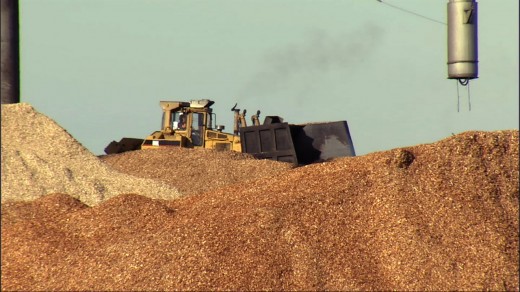
.
Huon Valley Environment Centre’s Jenny Weber says:
‘Tasmania’s world heritage value forests continue to be logged despite yesterday’s controversial announcement that woodchips shipments have been postponed by Tasmania’s only export woodchipping company, Artec (Artec Pty Ltd, Lilydale).’
‘Ta Ann is driving logging in contentious forests, and woodchip logs are leaving these same forests regardless of a viable market for the timber. The Tasmanian taxpayers are subsidising a logging industry that is economically unviable and environmentally unsustainable.’
‘This morning at Catamaran, in threatened forest behind Recherche Bay, a conservationist is in a tree sit, and thirteen people are halting logging. Huon Valley Environment Centre is repeating it’s calls for the immediate end to logging in this forest that borders the Tasmanian Wilderness World Heritage Area, (TWWHA).’
.
Logging in this area, identified by Forestry Tasmania as CM004C, commenced after the Prime Minister Julia Gillard and Premier Lara Giddings announced the Inter-governmental Agreement on 7th August 2011 would provide ‘immediate protection in informal reserves’ for forests such as these.
 Tasmanian Premier Lara Giddings and Australian Prime Minister Julia Gillard
signing the Tasmanian Forests Agreement, 7th August 2011 Tasmanian Premier Lara Giddings and Australian Prime Minister Julia Gillard
signing the Tasmanian Forests Agreement, 7th August 2011
.
Forestry Tasmania Coupe ‘CM004C’ is located within the 572 000ha of identified forests for legislated protection. Last week conservationists participated in a protest in the coupe, and it was revealed that the area is being clearfelled for Ta Ann, export peeler logs and woodchip logs.
 Forestry Tasmania’s cable logging of The Weld Forest, 2009
Tasmanian Southern Forests
(Huon Valley Environment Centre)
(click image to link to slide show) Forestry Tasmania’s cable logging of The Weld Forest, 2009
Tasmanian Southern Forests
(Huon Valley Environment Centre)
(click image to link to slide show)
IGA Clause 26 states:
.
‘The State will ensure that, until the further independent verification process required under Clause 20 is completed, wood supply required under Clause 17 will be sourced from outside the 572,000 hectares of ENGO-nominated High Conservation
Value forest area unless the remaining State Forest area is insufficient to meet the contractually specified quality and quantity of wood supply. Where this is the case, the Tasmanian Government will ensure that wood supplies are sourced outside the 430,000 hectares placed in Informal Reserves. The Tasmanian Government will ensure that the 430,000 hectares of State Forest identified in Attachment A is not accessed’
.
Analysis:
-
There are copious hundreds of hectares of Tasmanian forest area available outside the 572, 000 hectares of ENGO-nominated High Conservation Value forest area.
-
The Lala Labor Government by not ensuring wood supply is sourced outside the 430,000 ha in Informal Reserves is not accessed, and thus in prima facie breach of the IGA. Lala Labor is deliberately and mischievously exercising selective deafness by not listening to ENGO accusations of the breach of the IGA terms. Labor as head wolf of the chicken pen, turning a blind eye to its fellow wolves while they help themselves to the plunder.
-
The Gillard Labor Government is in breach of IGA Clause 27, by failing to act on this trigger ‘to appoint independent expert specifically to review scheduling and other relevant data and attempt to reschedule harvesting activities so as to meet the requirements of contracts and maintain the interim protection of the 430,000 hectares’. The option of log anyway is not an option. The prescribed option under IGA Clause 27, is that the Commonwealth will instead compensate the contract holder for the value of lost profits and unavoidable costs.
-
Both Governments, by sitting on their hands as forests in the Informal Reserves are logged, are in breach of the spirit of the Agreement.
.
.
2009: ‘Woodchip stockpile in Tasmania a ‘health risk’
[Source: Matthew Denholm, Tasmania correspondent, The Australian, 20091014, ^http://www.theaustralian.com.au/news/woodchip-stockpile-in-tasmania-a-health-risk/story-e6frg6ox-1225786465432]
.
The woodchip stockpile in Burnie could pose a “significant health risk”, according to an expert opinion being assessed by health authorities. Tasmanian Director of Public Health Roscoe Taylor said the advice that the stockpile would at times contain Legionella bacteria is being examined.
“I have actually asked someone to have a look at it — we’ll be taking a look at it,” Dr Taylor said.The advice from Legionella expert Trevor Steele concludes the bottom layer of the stockpile on Burnie’s wharf would “undoubtedly” contain Legionella at times. Dr Steele warned the bacteria’s dispersal via dust could pose a significant health risk to townsfolk near the wharf and to workers at the port.
“It (the bottom layer) will at times undoubtedly contain Legionella and these could multiply there given the right conditions,” he said.
“This layer would also act as a source to contaminate newly arrived woodchips, setting the stage for a new cycle of Legionella growth.
“Dispersal of dust … containing these organisms could pose a significant health risk to susceptible persons working in, or residing in, adjacent residential or business districts, as well as to susceptible workers on the Gunns site and in the port area.”
Dr Steele was commissioned to provide the advice by Royal Hobart Hospital physician Frank Nicklason. Last week, Dr Nicklason apologised to timber company Gunns for his 2004 statement that the woodchip pile “almost certainly” had Legionella present that could blow across Burnie. However, he said his concerns about the potential for public health risks from the pile — initially sparked by several Legionella cases in Burnie — remained.
Dr Nicklason said he accepted that Gunns’ sampling in 2002 had not found Legionella in the pile. However, he said Dr Steele’s findings, from July this year, contributed to his concern and warranted further investigation.
Gunns’ own advice, conducted independently in 2002 and released under Freedom of Information, found that the available evidence “suggests strongly” that the bottom layer is “not a reservoir for Legionella”.
However, Dr Steele, formerly director of clinical microbiology at the Institute of Medical and Veterinary Science in Adelaide, disagreed.
“To claim that the sacrificial layer did not contain Legionella on the basis of two tests of small samples is misleading,” he says.
He agreed the bottom layer, because it was relatively undisturbed, was unlikely to pose much risk to the community, but that this did not mean there was no risk, since Legionella there could contaminate new woodchips.
When asked whether Gunns stood by its own findings, a spokesman said: “We don’t have to: Dr Nicklason has stood by it.
“At the time Dr Nicklason gave this apology he was in possession of the Steele report. His attempt to retract his apology by reference to this report is hypocritical, disingenuous and beggars belief.”
Dr Nicklason said his “carefully worded” apology — made as part of settlement of defamation proceedings — merely acknowledged that Legionella had not been found in samples taken by Gunns, and that its report had concluded there was “no available data” to implicate woodchips as a microbial health risk.
There are few detailed studies of Legionella in woodchip piles, although Dr Steele has found the bacteria present in all forms of composting and degrading wood products, including woodchips.
On the basis of his work, Dr Steele believes that conditions in woodchip stockpiles are ideal for Legionella and other micro-organisms that require moisture and warmth.
Legionella is thought to spread by people inhaling the bacteria contained in tiny water droplets, known as aerosols, or in dust.
Over the years, there have been complaints about dust and debris blowing from the stockpile to the Burnie CBD, adjacent to the port.
These have been focused on days of easterly winds, which occur about 20per cent of the time, and when woodchips were being loaded on to ships.
The 2002 Gunns report, conducted by Adelaide environmental health expert Richard Bentham, pointed out that survival of Legionella in aerosols was “highly dependent upon ambient weather conditions”.
For this reason, Dr Bentham concluded the health risks from the Burnie pile were “most probably confined to employees or contractors working on the site” and that transmission beyond the port area was “unlikely”.
However, Dr Steele says Legionella “could survive well in dust travelling long distances, even in adverse climatic conditions”. He cites instances of up to 20km.
.
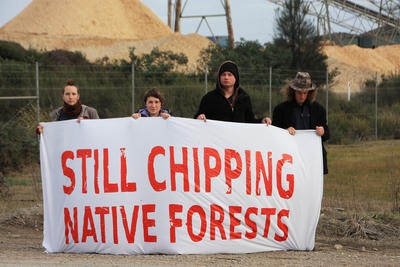
.
.
Recherche Bay – a brief background
.French explorer D’Entrecasteaux led his ships to grateful shelter in Recherche Bay, southwest of Hobart, in 1792 and 1793, recording “ancient forests, in which the sound of an axe had never been heard”. Barely 200 years later, the forest of Recherche Bay is being threatened by the sound, not merely of axes, but of bulldozers and chainsaws.In spite of public protest and National Heritage listing, the green light to log the area has been given.
- 24/1/06 Entrepreneur/adventurer Dick Smith offers $100,000 towards the purchase of Recherche Bay plus a $1.9 million no-interest loan to be paid back within 12 months.
- 5/11/05 Over 5000 people rally in Hobart for the protection of Recherche Bay. Bob Brown launches a bid to purchase the peninsula, asking people to pledge units of $1,000 to raise the money. Bob pledges $5,000.
- 6/10/05 Senator Ian Campbell announces Recherche Bay will be placed on the National Heritage list but says logging will still go ahead.
- 19/8/05 Launch of Bob Brown’s photographic exhibition and book, Tasmania’s Recherche Bay
- 27/4/05 Actor David Wenham and director Robert Connolly fly over Recherche Bay and visit the tall trees in the Styx Valley, stating their support for conservation.
- 20/4/05 Tasmanian Greens leader Peg Putt calls on French scientists to help save Recherche Bay
- 17/4/05 1000 people rally on site to protect Recherche Bay
- Nov, 03 Tasmanian Heritage Council recommends the protection of the north east peninsula for its cultural significance.
[Source: ^http://www.leatherwoodonline.com/wild/2006/recherche_bay/index.htm]
.
.
1993: ‘Campaign over Recherche Bay scores win’
[Source: Bob Elliston, Hobart, Green Left Weekly, 19931117, ^http://www.greenleft.org.au/node/34677]A five-year campaign to save part of historic Recherche Bay, in south-east Tasmania, has been won, with all parties involved having achieved a satisfactory resolution. The agreement was announced on February 8 by Labor Premier Paul Lennon.Thanks mostly to the support of well-known philanthropist Dick Smith, the tireless negotiations of Greens Senator Bob Brown and the decency of owners David and Robert Vernon, 142 hectares of forest will now be purchased by the Tasmanian Land Conservancy for $2.21 million.Recherche Bay had been under the threat of logging by Gunns Ltd since a contract with the owners was signed in 1998. The bay became home to a French expedition to observe the Earth’s magnetic field in 1792 and 1793. Had logging gone ahead, today’s very destructive logging techniques would have destroyed any chance for useful archaeology of the site to be conducted.Under the deal, Dick Smith will lend the Conservancy group $2 million, $100,000 of which is a personal donation. The state government, which initially supported the Vernon brothers’ decision to have the area logged, has now agreed to assist with $210,000 towards the cost of the land. In addition, the government will waive the $80,000 it would have collected in stamp duty. donations exceeding $238,000 have already been pledged.Although the small forest will not be harvested, no jobs will be lost. More jobs are likely to be generated in services supporting the local community and scientific interest.
However, the deal is not without its critics. Terry Edwards, CEO of the Forestry Industries Association, is distressed that the forest will continue to grow, rather than be turned into cash for Gunns. Newly appointed federal forests minister and Tasmanian senator Eric Abetz has also criticised the agreement, describing it as “a grubby deal”. According to Abetz, the area “has no heritage value”.
.
.
Further Reading:
.
[1] The Last Stand, ^http://www.thelaststand.org.au/, Media Release 20111116:
‘The HVEC and Code Green have taken direct action on Tassie’s forest floor this morning to highlight ongoing logging in high conservation value forests that were supposed to be protected under the Inter-governmental Agreement. Campaigners are currently taking simultaneous action in two logging coupes in the north and south of the island – RS117C on Roses Tier, north of Ben Lomond, and in the Catamaran area, where forests are being logged behind Recherche Bay.
“This is an area that should have been given immediate protection on March 15 this year. Instead we are still seeing machines clearing what has been identified by both the State and Federal Governments as being of high conservation value.” Said Jared Irwin, spokesperson for Code Green.
“The lost values of these forests that are bordering the Tasmanian Wilderness World Heritage Area is such a tragedy, when the logging commenced after the State and Federal Governments announced they would be protected in August 2011,” Said Jenny Weber, Huon Valley Environment Centre’s spokesperson.’
.
[2] ^http://www.nativeforest.net/
.
[3] Tasmanian Intergovernmental Forest Agreement 2011, ^http://australia.gov.au/content/tasmanian-forests-agreement
.
[4] ‘The Axe Had Never Sounded: place, people and heritage of Recherche Bay, Tasmania’, by John Mulvaney, published by ANU E Press and Aboriginal History Incorporated, ANU E Press,
^http://epress.anu.edu.au/aborig_history/axe/html/ch13.html
.
‘A thriving sawmilling industry existed at two centres around the bay by 1900. The steam-driven mill continued at Waterhole Cove until 1868. Then the industry faltered until 1884, when large sawmills were established by the Catamaran River and at Leprena on the western side of the northern bay. By 1900 the population living there exceeded 100 at each centre. It was around the turn of the century that coal mining also offered employment, and an active industrial period followed for a few years. The seams of coal proved limited or uneconomic. As trees were felled, their distance from the sawmill increased. This required timber rail tramways establishing a network radiating out from an area and moved on when that area was harvested. The same applied to transporting coal.
By 1939 a complex network radiated from harbour-based centres at Catamaran, Leprena and Cockle Creek. Traces of these lines survive today in regrowth forests.[1] One moss-covered segment runs by the shore on the north-eastern peninsula in the area of the French activities in 1792.
The timber industry is necessarily situated in forests, so bushfires prove a recurring hazard. The Catamaran mill was destroyed in a 1914 bushfire, coinciding with the abandonment of the coal mine there. The spasmodic and transitory nature of frontier employment was again demonstrated at Recherche Bay when the community of around 100 people, supporting a school and a store, faced sudden unemployment. Today the media feature factory closures and speculate about the future employment of the urban employees. The history of much of rural Australia also has been a boom and bust story of employment, as rural industries prosper then fold. Recherche Bay is a classic example. On a smaller scale than urban plant closures, the impact upon the families dependant upon a timber mill or colliery was no less drastic.’
[Chapter 13. Good and Bad Times]
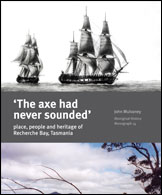
|
The State will ensure that, until the further independent verification process required under Clause 20 is completed, wood supply required under Clause 17 will be sourced from outside the 572,000 hectares of ENGO-nominated High Conservation Value forest area unless the remaining State Forest area is insufficient to meet the contractually specified quality and quantity of wood supply. Where this is the case, the Tasmanian Government will ensure that wood supplies are sourced outside the 430,000 hectares placed in Informal Reserves. The Tasmanian Government will ensure that the 430,000 hectares of State Forest identified in Attachment A is not accessed. Where harvesting work has already begun in coupes within the nominated 430,000 hectares, rescheduling will occur as soon as practical and a list of coupes that will be harvested will be agreed by the Governments and the signatories, advised by the Independent Verification Group, within two weeks of the signing of this agreement. If sourcing of wood supply from within the 572,000 hectares is considered to be necessary under any circumstances, the Governments will immediately consult with the Reference Group of Signatories and the Independent Verification Group in order to inform them of the basis for sourcing wood supply in those areas, and with the intention of providing this supply in a way that minimises impacts on conservation values.
|
|
During the independent verification process, in the event that Forestry Tasmania reports that it cannot meet contractual requirements from production resources outside the nominated 430,000 hectares, the Governments will undertake the following steps. First, an independent expert will be jointly appointed by the Governments to review scheduling and other relevant data and attempt to reschedule harvesting activities so as to meet the requirements of contracts and maintain the interim protection of the 430,000 hectares. In the event that the independent expert concludes that it is impossible to achieve this through rescheduling on a reasonable commercial basis or through sourcing alternative supplies, the Commonwealth will compensate the contract holder for the value of lost profits and unavoidable costs. Any such costs will be met, in the first instance, from within the $7 million payment in financial year 2011-12 referred to in Clause 35.
|
Tags: Catamaran, Clause 25, Forestry Tasmania, IGA, illegal logging, logging moratorium, Recherche Bay, Roses Tier, Ta Ann Group, Tasmanian Forests Intergovernmental Agreement, Tasmanian Wilderness World Heritage Area, the axe had never sounded, Weld Forest, woodchip horders, woodchip stockpile health risk
Posted in Tasmania (AU), Threats from Deforestation, Threats to Wild Tasmania | No Comments »
Add this post to Del.icio.us - Digg
Sunday, October 30th, 2011
The following article is a selected summary of relevant information sourced from the Tasmania Times (TT) online newspaper from articles and reader comments (October 2011) concerning the revelation that Tasmanian Premier Lara Giddings unnecessarily paid $34.5 million of taxpayers money to industrial logger Gunns as compensation for it exiting native forestry.
 Tasmanian Premier Lara Giddings (2011- )
What will be her legacy ~ accountable and faithful to the people of Tasmania? Tasmanian Premier Lara Giddings (2011- )
What will be her legacy ~ accountable and faithful to the people of Tasmania?
.
The Charge:
.
Previously secret communications between Gunns and Forestry Tasmania, obtained by the Liberals under Right to Information laws, blows a massive hole in (Tasmanian Labor Premier) Lara Giddings’ claim that she had no option but to pay Gunns’ $34.5 million in compensation for exiting native forestry. (NOTE: The $34.5 million = 23m for Gunns residual rights and $11.5m to settle the dispute with FT.)
A letter, dated 18 April 2011, from Gunns Chairman Chris Newman, to Forestry Tasmania Chairman Adrian Kloeden, reveals that Gunns not only wrote to Forestry Tasmania to formally terminate their native wood supply contracts (917 and 918) in April this year, they also offered to terminate the contracts on a “full release and indemnity basis.”
In part, the letter reads: “Gunns therefore wishes to terminate CoS 917 and 918…To the extent that FT requires formal notice, please treat this letter as notice of termination under clauses 3.3(b)(i) of Cos917 and 3.3(b)(ii) of CoS918.
.
“While Gunns remains ready, willing and able to perform its contractual obligations under CoS 917 and 918 during the notice period, we consider than an immediate separation would be in the interests of Gunns, FT and the Tasmanian forestry industry generally…“I therefore propose CoS 917 and 918 be terminated on a full release and indemnity basis in respect of any and all outstanding issues.”
.
Mr Newman also offered to help Forestry Tasmania gain access into the (immoral and greedy) Chinese Woodchip Market, including introducing FT to Gunns’ customers and also offered to hand over roading infrastructure to the value of $200 million over to Forestry Tasmania.
 Asian appetite for woodchips cares squat about the forest source,
cares squat about the means.
Tasmanians understand: Asian corporate culture is single bottom line:
Personal ends justifying any eco-social means to maximise personal economic wealth! Asian appetite for woodchips cares squat about the forest source,
cares squat about the means.
Tasmanians understand: Asian corporate culture is single bottom line:
Personal ends justifying any eco-social means to maximise personal economic wealth!
.
.
A Tasmanian Case to Answer:
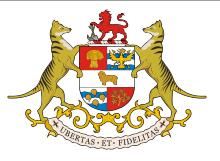 Tasmania’s traditional Coat of Arms
‘Ubertas et Fidelitas’? …”fertility and faithfulness” Tasmania’s traditional Coat of Arms
‘Ubertas et Fidelitas’? …”fertility and faithfulness”
.
The significance of this letter cannot be under-estimated. Under the hand of Gunns’ chairman, Gunns voluntarily wrote to Forestry Tasmania to terminate its contracts ‘immediately’ on the 18th of April 2011 requesting an ‘immediate separation’ which clearly would have extinguished the Premier’s so-called “residual rights”.
This is supported by the advice of Forestry Tasmania Managing Director Bob Gordon In a subsequent Ministerial Brief dated 10 May 2011 from to Bryan Green, where Mr Gordon informs the Minister that this offer to terminate on a “full release and indemnity basis” from Gunns would “extinguish” the need to negotiate in good faith new terms of agreement for supply, the so-called “residual rights” that Ms Giddings has claimed as the reason for the $34.5 million in compensation.
.
Given this correspondence, it appears inconceivable that Lara Giddings could have been advised by the Solicitor-General that the Government was obliged to pay Gunns to extinguish the contracts. Ms Giddings now has no option but to release the Solicitor-General’s advice on the matter.
Tasmania’s Resources Minister has played down correspondence between Gunns and Forestry Tasmania, which the Opposition says raises questions about Gunns’ right to government compensation for pulling out of state forests. The Opposition obtained a letter between Gunns and FT under Freedom of Information Laws, which shows Gunns offered to terminate its contracts. Liberal spokesman Peter Gutwein says it contradicts the Premier’s argument, that she had no choice but to pay Gunns.
“The Premier now has no leg to stand on,” he said.
.
.
Community insights and informed analysis:
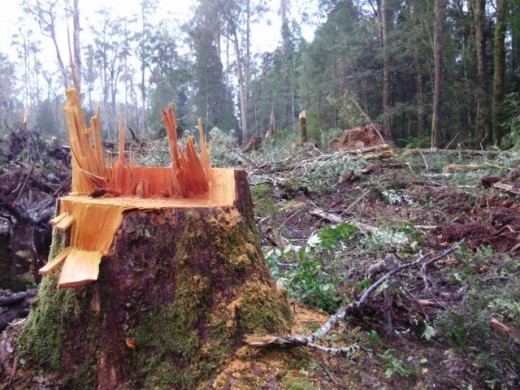
‘If all the above is genuine, and I can see no reason why it should not be, then the matter needs to be taken further. Much further. Lara and her “advisers” need to peruse all correspondence, memoranda and diary notes etc from Gunns in relation to their claim as to why there should be a payment to them by the taxpayers. Should there be a deliberate deception, or a deception by deliberate ommission that resulted in a serious financial advantage to Gunns then all avenues of recourse should be explored. If criminal charges are appropriate then so be it. It all would depend on the nature of the claims/submissions put forward by Gunns. There should also be cross referencing with any correspondence on the matter by Forest Tasmania. A formal investigation is surely warranted and the reason for the indecent haste in coughing up the taxpayer’s hard earned to Gunns and FT needs now to be justified.
Oh Lara. What a patsy you are. Your only contributions to the negotiations in this “complex” matter were to first publicly announce that “…we need Gunns..”, and secondly to publicly announce that you had $45 million in the “envelope” to resolve the “complex” matter. Brilliant. Just brilliant Lara.’
~ Len Fulton (a Tasmanian commenting to TT) 20111003
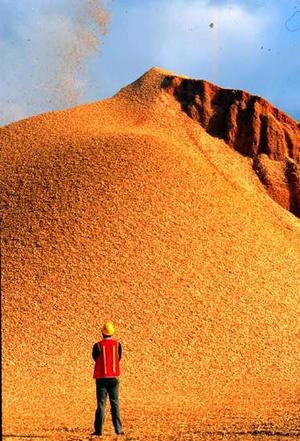
Woodchip stockpile – same colour as the chainsawed ancient Myrtle above
.
‘Very interesting documents. Regardless of whether you support the pulp mill or not there is something extremely fishy about this payment to gunns and all australian taxpayers should be screaming for the tabling for scrutiny of all documentation regarding the justification of this payment. Just on these produced documents and the fact that gunns had already closed down x no. of mills dismissed employees and placed triabunna on an approx. 8 week closure at the time the payment of compensation was dubious let alone some $34mil for the remaining life of the contract/s. This has a bad smell about it – now this previously “keep quiet” info is out Mr Gutwein what are you going to do about it?’
~ Ian (a Tasmanian commenting to TT) 20111003
.
‘Liberal complacence has helped foster the culture that has allowed our government to use excuses like “commercial in confidence” to not keep the public informed. So while Peter Gutwein is bouncing up and down on this issue, will he actually do anything, or remain as noticeable as a fly on the backside of an elephant?
~ Salamander (a Tasmanian commenting to TT) 20111003
.
‘Very revealing letter. I’ve previously argued that, if required, the Government should be prepared to buy back Gunns timber rights. Now, it seems, there was no need to buy them back at all because they had already formally relinquished them. This sheds a very nasty light on the way the Government rushed to pay Gunns double the initial offer. It also brings up questions about the $25 million that FT were apparently owned and why the Government felt it necessary to settle this matter to “avoid expensive legal arguments”.
The expense argument always seemed spurious. When there’s $25 million in dispute, surely it’s worth thrashing the matter out in court? On the other hand, the trouble with courts is that all the facts are likely to come out. I bet the Greens are having some interesting discussions at the moment! On the one hand there’s nothing to be gained by pulling the pin on Lala, but on the other hand, how far can they afford to let their reputation be trashed before they’ll never be able to recover the ground lost?’
~ Steve (a Tasmanian commenting to TT) 20111003
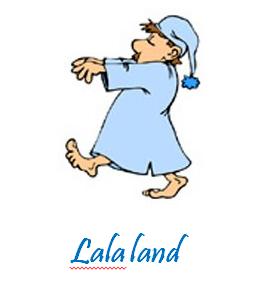
‘So Mr Gutwein, what are you going to do about it?
Are you quite rightly going to demand the return of all the ill-gotten monies from Gunns Ltd and Forestry Tasmania? Are you also going to demand FT collects monies owed by Gunns Ltd to them? Are you going to demand all the IGA (Julia Gillard’s Intergoverment Agreement) monies be shared amongst everyone except these two companies as was intended?’
~ Russell Langfield (a Tasmanian commenting to TT) 20111003
.
‘This isn’t the first or the biggest apparent fraud Tasmania has seen – the land swap was far bigger and the pulp mill approval business was more blatant – but it’s still very unusual to see the LibLabs falling out on something like this. The Tas justice system was magnificent in snatching Bryan Green from disaster, but do they have they the moxie to save the government’s bacon here? I suspect that Tas Inc’s closets are too dank to support an explosion, but I hope I’m wrong.’
~ John Hayward (a Tasmanian commenting to TT) 20111003
.
‘These damning documents show that the potential financial scam perpetrated upon the Australian and Tasmanian taxpayer is even worse than that stated by Peter Gutwein. Firstly, a further 10% GST has been added to the payments made to Gunns and FT increasing the amount paid in so-called settlement to $37.95M. On top of that, FT has effectively written off the $13.5M balance of the $25 million reputedly owed to it by Gunns under the ‘take or pay‘ provisions of its wood supply contracts bringing the total amount gifted by the taxpayer to at least $51.45 million.
Tasmanians must be told why, and on whose advice, was Gunns’ termination offer made on 18 April 2011 not accepted by FT and what part did the Premier and her Deputy play in this? What was the role of the Solicitor General and what were the circumstances that led to the Premier claiming the need for payment to extinguish Gunns’ “residual rights”?
What is the legal precedence and basis for the taxpayer settling a financial dispute between a private company and GBE over which the Minister has limited jurisdiction and no apparent financial control? The scale of this matter is beyond the scope of the feeble Integrity Commission and is so serious that it demands a full criminal investigation.
Finally, given that the release of this documentation has the potential to bring down the Government, the motives of the usually recalcitrant FT for being so forthcoming to the Shadow Minister for Forestry’s request are extremely suspect and demand that FT is put into administration pending the outcome of investigations.’
~ PB (a Tasmanian commenting to TT) 20111003
.
‘As per Chris Newman, Gunns ….“I will not recount Gunns’ various complaints of defective performance and non-performance by FT ….” Why? Not consistent with Gunns previously pretending the woodchip driven industry was sustainable let alone ‘worlds best practice’! Can the public see a copy of those complaints? Surely they are not all ‘commercial in confidence’.
“The reputation and marketability of Tasmanian native forest woodchip product is, and has always been directly affected by FT’s forestry management practices …” You forgot to add … and Gunns greedy easy street deal to woodchip bio diverse forests into oblivion. “FT was aware of the damage that its forestry practices were causing to the reputation of Tasmanian woodchip products …” Oh so FT’s forestry practices haven’t been a beautiful shining example afterall … I’m shocked at having been so deceived!! “Gunns therefore wishes to terminate CoS 917 and 918, noting our agreement that construction of the pulp mill did not commence by 30 November 2010.” You mean Gunns deliberately didn’t make a commencement of the mill to get out of the contract or used the companys own incompetence and failure to grab a government payout?
“Ünless a commercial resolution can be reached, I fear that these disputes will ultimately result in court proceedings.” Is that called holding the state to ransom … or bribery perhaps?
“I therefore propose that CoS 917 and 918 be terminated immediately on a full release and indemnity basis in respect of any and all outstanding issues.” So that’s what Gunns meant as per their ASX market update.
“3. Mutual release between the company and Forestry Tasmania from certain current and future claims arising out of those agreements.” “At the same time, FT will receive the benefit of a substantial infrastructure, worth in excess of $200 million, established by Gunns in anticipation of harvesting pulpwood from State Forests pursuant to CoS 917 and 918.” Is that where the touted $200 million figure for the so-called locking up of native forests originally came from? And you mean to say those native state forests being established, (albeit in reality little more than plantations) after wiping out the original diverse forests, weren’t actually being grown for future sawlogs, but indeed for nothing but pulpwood … thought so!
Bobby Gordon to embattled Bryan Green …. “It is unlikely the exchange of letters between Gunns and FT will become public.” … Why, something to hide perhaps? Obviously Labors Braddon office shredder mustn’t have been available.
“In the event that stakeholders become aware of the termination notice, Forestry Tasmania intends to release the following statement….” Is that called conspiring?
Let’s call it as it is, the $23 million for ‘residual rights’ and the Labor Gov gifting Gunns $11.5m to virtually pay itself via FT wasn’t to buy back HCV state native forests, it was hush money! Gunns are undoubtedly as successful as a trap door in a canoe. Gunns would be better off to start manufacturing butchers chopping blocks on wheels which they could pass around to their shareholders, directors, contractors, workers and political allies. Afterall, apparently they are attributing any future succusses on continuing to mobilize a self-serving carvery …
 Citizens’ justice – doing away with privilege, the French way
[Source: http://www.toonpool.com/user/589/files/it_chops_383035.jpg] Citizens’ justice – doing away with privilege, the French way
[Source: http://www.toonpool.com/user/589/files/it_chops_383035.jpg]
.
Caught in an avalanche of their own making, Gunns have at least successfully pulped themselves …Gunns and Forestry Tasmania and indeed blokes like Bryan Green and the Tasmanian Labor Government have been treating the public like fools for far too long … just desserts is the same ridicule and contempt they have shown the state of Tasmania.’
~ Claire Gilmour (a Tasmanian commenting to TT) 20111003
.
‘Other than the pyrotechnic display contained in this letter there are other incendiary devices. Such as the Gunns Chairman admitting that “construction of the pulp mill did not commence by 30 November 2010” That’s very different from the findings of EPA director Schaap. There is also a clear accusation that FT abused its monopoly position in the Tasmanian pulp wood market.’
~ Karl Stevens (a Tasmanian commenting to TT) 20111003
.
‘Has Gutwein called the Federal Police? If not, why not?
His inference is that The Commonwealth, and the State of Tasmania has been defrauded and if so it is very difficult to see how the Premier and Prime Minister are not parties to the act. In the absense of that call to the police being made, Mr Gutwein is nothing but another useless mouth we are feeding for no discernable benefit. Time to piss, Peter, or get off the bloody pot.If you don’t, many of us will return to our default position which is that we are governed by a coalition of liblab with the greens used as a smoke screen.’
‘Your party’s voting record backs that view to the hilt.. On reflection I would go further: Either it is fraud and therefore conspiracy to commit fraud, or it is extortion. Either way, it has all the hallmarks of something the federal police should be investigating. Why the Feds? Aside from the obvious reason it is federal money involved. My bet is that Gutwein will do nothing substantial because the bottom line is the Libs are run by TasInc who want the mill built right or wrong by anyone because they can make a dollar out of it. They fund both wings of the liblab machine. Such is the nature of party representatives. They know what the voters want, but serve the party interests first because that is where their loyalty lies. You get what you vote for. That gaping hole in the mills risk profile has not and will not go away regardless of any of this. It just keeps getting larger.’
~ Simon Warriner (a Tasmanian commenting to TT) 20111004
.
‘Having also read all the FOI it is interesting to see that Gunns had already terminated the wood supply agreements and that after the 15th of October the agreements were finalised. Also the $200 million of roading and bridge assets that they told FT they would be giving them would have reverted to FT ownership after 45 days under the agreement anyway. It appears that the rush to give Gunns money was important because after the 25 th October there would have been no reason to pay them anything. The briefing docs to Bryan Green show that he was fully cognisant of the deal ending.’
~ Pete Godfrey (a Tasmanian commenting to TT) 20111004
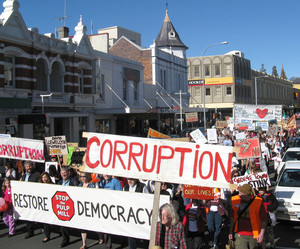
.
.
.
Subsequent revelations…
.
‘No advice on $34.5m Gunns deal: Tony Burke’
.
[Source: Matthew Denholm, Tasmania correspondent, The Australian, 20111022, ^http://www.theaustralian.com.au/news/nation/no-advice-on-345m-gunns-deal-tony-burke/story-e6frg6nf-1226173569723]
.
Federal taxpayers paid $34.5 million to Gunns to extinguish its rights to log Tasmania’s native forests without Canberra first seeking advice on whether the payment was legally required. Federal Environment Minister Tony Burke told The Weekend Australian he had not sought legal advice on whether the payments were necessary to extinguish Gunns’ contractual rights.
“I didn’t seek any advice on that,” Mr Burke said. “Legal advice on that was sought by the Tasmanian government.”
The state Liberals claim the payment was not legally required because Gunns had already voluntarily handed back the contracts to harvest 210,000 cubic metres of sawlogs each year. Tasmania’s Labor-Green government, which brokered the payment to Gunns, is refusing to release its own legal advice on the issue. However, Premier Lara Giddings insists the advice backs its stance that the payment was needed to remove Gunns’ “residual rights” over the vital contracts.
Their surrender was key to the protection of 430,000 hectares of forests under the $276 million federal-state forest peace deal signed by (Prime Minister) Julia Gillard in August (2011). However, Gunns had said it was leaving native forest logging regardless and documents obtained by the Liberals under state right-to-information laws show that on April 18 the company gave “formal . . . notice of termination” of the contracts.
Despite this, on September 15 deeds signed by the Tasmanian government granted $23 million in funds provided by Canberra to Gunns and a further $11.5 million—also federally sourced—to Forestry Tasmania. Mr Burke said yesterday the money had been provided to the Tasmanian government to “facilitate” the peace deal, also known as the Intergovernmental Agreement on Forests. Late yesterday, federal Agriculture Minister Joe Ludwig and Tasmanian Deputy Premier Bryan Green announced an additional$45 million voluntary exit package for Tasmanian forestry contractors. “This package will assist eligible contractor businesses to exit the native forest harvest, haulage and silvicultural contracting sectors,” he said.
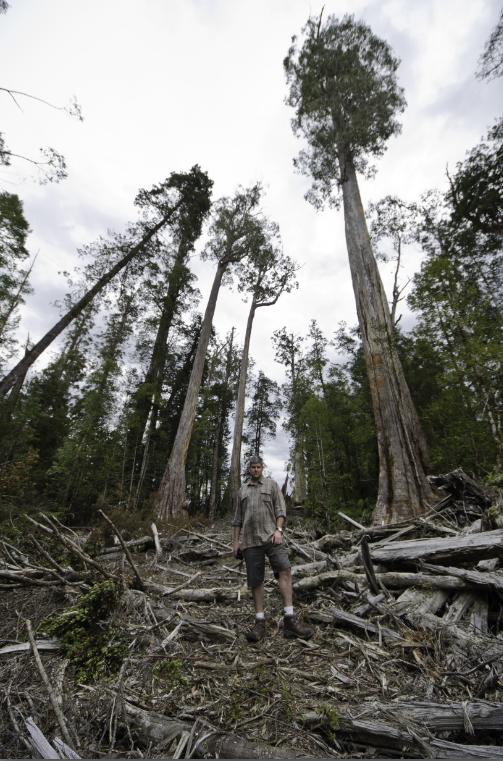 Meanwhile, Forestry Tasmania continues in earnest its wholesale massacre and incineration
of Tasmanian Old Growth for woodchipping pittance
(Upper Florentine Forest old growth, photo taken 28th September 2011) Meanwhile, Forestry Tasmania continues in earnest its wholesale massacre and incineration
of Tasmanian Old Growth for woodchipping pittance
(Upper Florentine Forest old growth, photo taken 28th September 2011)
.
.
‘Minister dodging questions on Forestry handout. Mill buyers. Gunns quizzed’
.
[by Kim Booth MP Greens Forestry spokesperson MR, 20111019, ^http://tasmaniantimes.com/index.php?/weblog/article/minister-dodging-questions-on-latest-forestry-handout/]
.
The Tasmanian Greens today said the Forestry Minister Bryan Green has failed to explain to the Tasmanian people why he approved another $1.1 million in public funding to prop up the failing forestry industry. Greens Forestry spokesman Kim Booth said there’s no credibility to the Minister’s claim that the industry could afford the transportation costs to Triabunna, but somehow could not afford to go the remaining 146 kilometres to Bell Bay without receiving public subsidisation.
.
“If the woodchipping industry is so unviable that it cannot even afford to pay the cost of transporting logs 146 kilometres, it is about time that the Minister realised that the industry is just not viable,” Mr Booth said.
“The Minister must first justify then explain why he thinks woodchippers of native forests should be paid with public funds and should take priority at a time when other areas are having to do it tough by cutting services.”
“As for the question of the supposed ‘log jam,’ the question must be asked why Forestry Tasmania is causing these trees to be cut down if the operators cannot even afford to transport them to the point of sale?”
“Every other transport business in the state must survive on its own resources, and there’s no doubt that all the other struggling transport operators in Tasmania would love a handout. So why is the woodchipping industry treated so differently?”
“How many million dollars of public money will this Minister rob from the public purse and give to his industry darlings before he wakes up to the fact that public money if for public benefits like healthcare, not to prop up unviable private businesses.”
 ..The Tasmanian Government’s logo…’explore the possibilities’…at what cost?
A return to Tasmania’s traditional coat of arms would be very appropriate. ..The Tasmanian Government’s logo…’explore the possibilities’…at what cost?
A return to Tasmania’s traditional coat of arms would be very appropriate.
.
.
Further Reading:
.
[1] ‘ Explosive letter confirms Gunns voluntarily gave up contracts‘, Tasmanian Times, 20111005, ^ http://tasmaniantimes.com/index.php?/weblog/article/explosive-letter-confirms-gunns-voluntarily-gave-up-contracts/
[2] ‘ More questions over Gunns’ rights buyout‘, 20111003, ^ http://www.abc.net.au/news/2011-10-04/2011041011-gunns-rights-buyout-questioned/3207848?section=tas
[3] Letter from Mr Newman and subsequent Ministerial Brief: Gunns_letter_and_Ministerial_briefing.pdf [ Read Letter]
[4] The full Right to Information documents requested by Peter Gutwein MP, Forestry Tasmania, ( Part 1), ( Part 2)
[5} ‘ Hush Lara Hush‘, by Peter Henning, Tasmanian Times, 20110520, ^ http://tasmaniantimes.com/index.php?/weblog/article/hush-lara-hush/
•
.
Tags: asian corporate culture, commercial in confidence, corruption in confidence, Forestry Tasmania, Gunns, Gunns' residual rights, Julia Gillard, Lalaland, Mr Greedy, Peter Gutwein MP, Right to Information, Tasmanian Forests Intergovernmental Agreement, Tasmanian Solicitor General, The Lala Swindle, Ubertas et Fidelitas
Posted in Tasmania (AU), Threats from Deforestation, Threats from Greenwashing, Threats to Wild Tasmania | No Comments »
Add this post to Del.icio.us - Digg
Friday, October 28th, 2011

From its satellite image, Tasmania is a green ‘apple’ isle
(except the bright ‘apple’ colour dominating Tasmania’s east is grass, long clear-felled forest for farming.
Any wonder why Eastern Tasmania lives in a rain-shadow getting just 600 mm of rainfall a year.)
.
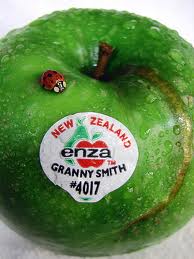 . .
.
Any State that uses 1080 is backward and internationally sends a message of being so.
It’s tourism marketing should have its brand tarnished so. Tasmania’s ecological image deserves to be as bad as New Zealand’s. NZ’s Department of Conservation drops 1080 indiscriminately out of helicopters in spades.
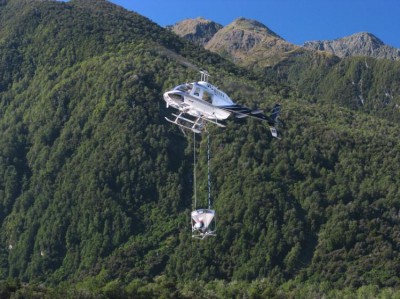
‘Pure’ New Zealand has a reputation for aerial poison of its native forests using ‘1080 poison’
.
The natural forest vista harbours a sterile faunal ecosystem. Tourism doesn’t care. It’s promotional photos still convey its target ‘pristine’ image, irrespective of the faunal carnage below the tree canopy.
‘Satellite Pristine’ – a ecologically contestable concept, eh?
I am sure that Guantanamo adopted a military ‘spit -and-polish’ image from the front gates too.’
.
 The entrance to Camp Justice, the site of the U.S. war crimes tribunal compound,
at Guantanamo Bay U.S. Naval Base in Cuba (Reuters)
The entrance to Camp Justice, the site of the U.S. war crimes tribunal compound,
at Guantanamo Bay U.S. Naval Base in Cuba (Reuters)
.
by Tigerquoll
Suggan Buggan
Victoria 3885
Australia
.
Tags: 1080 poison, aerial poisoning, Camp Justice, Eastern Tasmania, Guantanamo, New Zealand aerial baiting, New Zealand Apples, rain-shadow, satellite pristine, Tasmanian apples
Posted in Tasmania (AU), Threats from Poaching and Poisoning, Threats to Wild Tasmania | No Comments »
Add this post to Del.icio.us - Digg
Tuesday, October 25th, 2011
The following article was initially posted by Tigerquoll as a comment on the Tasmanian Times 20100202:
.
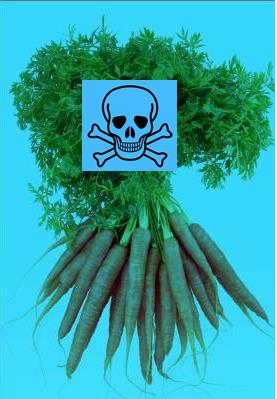 1080 ‘blue carrots’ 1080 ‘blue carrots’
.
Six years ago, the Tasmanian Greens tabled their Agricultural and Veterinary Chemicals (Control of Use) Amendment (Ban 1080) Bill 2004 to ban the use of 1080 poison (sodium monofluoroacetate) against native wildlife. But it excluded “persons directly employed with the Fox Task Force, up until the period ending 1 October 2006.”
‘Fox Task Force‘ …what a scam! Talk about dodgy jobs for mates at DPI. All they come up with is shit. It could be Drop Bear shit! They may as well be called it the Drop Bear Task Force and dress ’em up in black special forces attire and give ’em paint guns.
1080 must be banned in Tasmania outright including this fraudulent drop bear mob. I’d like to see an FOI on how much the taxpayer has funded them since they were set up. $10 million? We could have found a cure for the Devil’s face tumor or housed hundreds of homeless youth in Tasmania by now.
Tasmania’s “Department of Primary Industries and Water is the only importer of 1080 into Tasmania and only authorised officers of the Department handle the poison.” So the 1080 buck stps with DPI. DPI’s head needs to show cause, whoever the latest ‘acting’ secretary is! DPI has had so many name changes, ministers and bosses, DPI staff must be running the show. GM Environment was Warren Jones in October, so he can take the can, unless he’s been sacked as well.
According to DPI’s latest annual report, its Environment branch has a mission “to ensure best practice in environmental management and pollution control”…blah blah blah.
Well best practice in environmental management is exercising the precautionary principle, which in lay terms means if you’re not sure don’t intervene. Well ban 1080 until you can deliver a fox to the Hobart Town Hall!
.
.
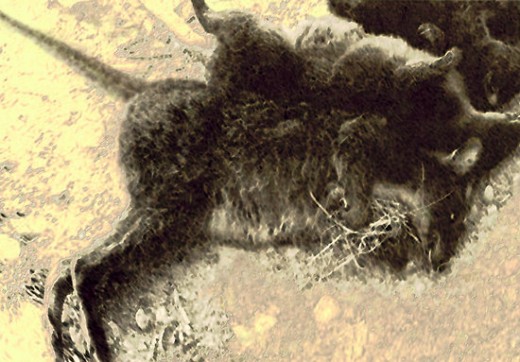 Tasmanian native Pademelons killed by 1080 poison
Source: http://www.redbubble.com/people/cradlemountain/art/3160948-why-is-1080-poison-not-good-for-tasmania-and-the-world Tasmanian native Pademelons killed by 1080 poison
Source: http://www.redbubble.com/people/cradlemountain/art/3160948-why-is-1080-poison-not-good-for-tasmania-and-the-world
.
‘By the year 2000, the Tasmanian Government poisoned 30 million native animals by allowing forest and farming industries to kill all marsupials (other species were sacrificed along with the slaughter).
Here I was collecting bodies and found nine different species affected, dead. This little female wallaby was clasping onto grass and had made a circle in the ground while dying in pain. I could not get the grass out of her little paws.’
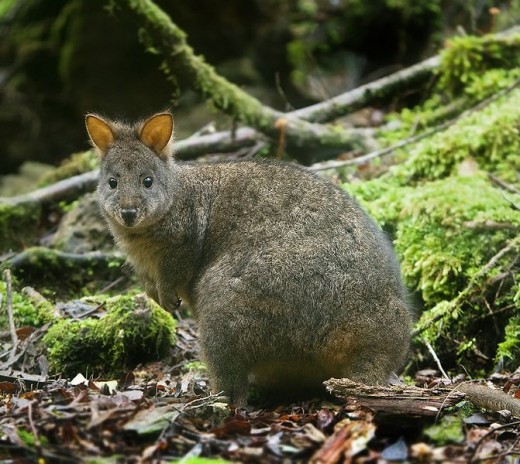 A live and healthy native Tasmanian Pademelon A live and healthy native Tasmanian Pademelon
.
.
1080 is immoral
.
1080 (sodium monofluroacetate) is a cruel and indiscriminate poison used to ‘remove’ unwanted populations of animals.
Banned in most countries, 1080 is still used liberally throughout Australia and New Zealand to control so-called ‘pest’ species, and reduce ‘browsing damage’ caused by native animals on private land. Its use is indiscriminate, which means that it kills not just the target feral animals but every animal in the area that eats off the forest floor.
1080 poison is a slow killer. When ingested (usually through baited food) the animal suffers a prolonged and horrific death. Herbivores take the longest to die – up to 44hrs, while carnivores can take up to 21hrs before finally succumbing to final effects of the poison. The speed of death is dependent on the rate of the animals metabolism.
.
A Slow & Horrific Death
.
Witnesses to the deaths of herbivorous animals, such as macropods, have reported:
“Affected wallabies were sometimes observed sitting hunched up, with heads held shakily just above the ground. Generally they appeared non-alert and ‘sick’, with shivering or shaking forelimbs and unsteady balance. Most individuals then experience convulsions, falling to the ground and lying on their backs and sides, kicking and making running motions with their hind legs before dying. Many individuals also ejaculated shortly before death, and, with others, exuded a white froth from their nostrils and mouth.”
Carnivorous animals such as dingoes, dogs, foxes, and cats become very agitated, as they tremble, convulse and vomit.”
[Source: ‘The World League for Protection of Animals’, ^http://wlpa.org/1080_poison.htm]
.
Also, 1080 is indiscriminate, it kills all carnivores including Devils, and endangered quolls and dogs.
“Under state poisons legislation, 1080 is a Schedule 7 poison and is available only to specialised or authorised users who have the skills necessary to handle it safely. Under the Agricultural and Veterinary Chemicals Code Regulations 1995, products containing 1080 are also declared to be ‘Restricted Chemical Products’. As such, the products can only be supplied to or used by ‘authorised person(s)’. Individual states set the authorisation criteria taking the APVMA’s and state regulatory requirements into account.
Despite these regulations, poisoning of non-target wildlife and domestic pets is common and farm animal species can also be at risk. In NSW, an estimated 14,000 baits are laid per Rural Land Protection Board per annum, and 2002-2003 figures on 1080 use released by the Tasmanian Government indicated Forestry Tasmania used 23 per cent, farmers 47 per cent, and private forestry 30 per cent. In the same year, the Tasmanian Government also released statistics stating that 97,000 wallabies and brushtail possums had been poisoned by 1080, primarily through baiting programs aimed at targeting browsing and grazing native animals as part of forestry management. Phasing out of 1080 in Tasmanian forests has since commenced.
Canines are particularly susceptible to 1080 and the lethal dose for dogs has been calculated at 0.05mg/kg. Once consumed, it is rapidly absorbed from the gastrointestinal tract, impairing cellular respiration through disruption of the citric acid cycle with resultant CNS anoxia and cardiovascular disturbance. 1080 can also be absorbed from the respiratory tract and through cuts and abrasions.
1080 has no specific antidote and even in animals treated symptomatically, is usually fatal.”
[Source: ‘The Veterinarian’, ^http://www.theveterinarian.com.au/features/article685.asp]
.
1080 poison is as vicious as laying 19th Century steel jaw traps around Hobart parks, or giving kids air rifles to play with at school.
It is incumbent on the public’s trust in the ethics and responsibility of the Tasmanian Government’s Department of Primary Industries, Parks, Water and Environment (etc) to show proof of foxes or else ban 1080 poison outright across Tasmania.
Else it will be some perturbed fox myth that ends up killing Tasmania’s devils, quolls, wallabies, the forester kangaroo, just like the 19th Century myth that Thylacene’s killed farmers’ sheep so deserving their redneck extinction.
The DPI always claims recent physical evidence of foxes. If so, then show recent proof to the public, not old specimen carcasses from a zoo. Show the Tasmanian public also independent zoological proof that using 1080 cannot harm non-target species!
.
Victoria following Tasmania’s backward example
.
‘Authorised persons in Victoria can now purchase 1080 pest animal bait products from accredited retailers or licensed perishable bait manufacturers.
Two categories of 1080 pest animal bait products are now available in Victoria:
- Australian Pesticides and Veterinary Medicines Authority (APVMA) registered 1080 pest animal bait products (‘shelf-stable bait’) such as dry oats and dried meat baits. Retailers of these baits must have Agsafe Guardian 1080 accreditation.
- Perishable 1080 pest animal bait products (‘fresh’ bait) such as carrot and liver, manufactured using 1080 aqueous solution registered with the APVMA for that purpose. These bait products are not registered with the APVMA but are supplied under an APVMA permit. The manufacturer of these bait products is also the retailer. These persons must meet specific training and accreditation requirements and be licensed by the Department of Human Services (DHS).
In order to purchase 1080 pest animal bait products you need to complete a Course in Minimising the Risks in the Use of 1080 Pest Animal Bait Products for Vertebrate Pest Control and obtain a 1080 endorsement to your Agricultural Chemical User Permit (ACUP).
These changes are designed to make it easier for you to purchase 1080 pest animal bait products. They enable users to purchase 1080 pest animal bait products from local accredited retailers during normal business hours, enable a greater range of 1080 pest animal bait products to become available to users, and make the manufacture, supply and use of 1080 pest animal bait products safer.’
[Source: ^http://dpi.vic.gov.au/agriculture/farming-management/chemical-use/agricultural-chemical-use/bait-system, accessed 20111025]
.
.
South Australia following Tasmania’s backward example
.
‘The Controlled Substances (Poisons) Regulations,1996 allows land owners access to 1080 baits (sodium fluoroacetate) for the control of rabbits, foxes and dingoes/ wild dogs on their own property.
The current Label, Directions for Use and Material Safety Data Sheet are reproduced here for each bait product.
The Directions for Use include the following documents:
Record of notification of neighbours before commencement of baiting programs
Checklist to be used when a person first receives baits
Poison laid sign design
Authorisation to use the baits requires the land owner (or their agent nominated in writing) to sign an Approval to Possess 1080 Bait form supplied by a Natural Resources Management officer. Non-compliance with the Directions for Use is an offence under the Controlled Substances Act, 1984 and the Agricultural and Veterinary Products (Control of Use) Act, 2002.
For information on the supply and possession of 1080 bait, contact the Environmental Health Branch, Department of Health on (08) 8226 7117 or (08) 8226 7137.
For information or advice on suspected cases of misuse of 1080 bait products or to report that non-target animals may have been poisoned by 1080, contact PIRSA Biosecurity – Rural Chemicals on (08) 8226 0528.
[Source: ^http://www.pir.sa.gov.au/biosecuritysa/nrm_biosecurity/pest_animal/1080_use_in_sa, accessed 20111025]
.
.
Further Reading:
.
[1] ‘Another bogus fox claim‘, by Ian Rist, 20100201, Tasmanian Times, ^http://tasmaniantimes.com/index.php?/weblog/article/another-bogus-fox-claim/
[2] ‘Code of Practice for the Use of 1080 for Native Browsing Animal Management‘, Tasmanian Department of Primary Industries, Parks, Water and (by the way) Environment, etc.
[3] ‘ 1080 Poison‘, The World League for Protection of Animals, ^ http://www.wlpa.org/1080_poison.htm
[4] ‘ 1080 Poison – the all purpose killer‘, Animal Liberation, ^ http://animal-lib.org.au/subjects/culling-and-pest-control/20-1080-poison.html
[5] ‘ STOP 1080 POISON. New Zealand Must Ban This Poison!‘, 20090425, ^ http://www.openureyes.org.nz/blog/?q=node/1359
[6] Indiscriminate Aerial Baiting in New South Wales, ^ http://www.dpi.nsw.gov.au/__data/assets/pdf_file/0003/57279/rab-003.pdf
[7] Tasmanian Farming – 1080 Poison
.
Sunday, October 23rd, 2011
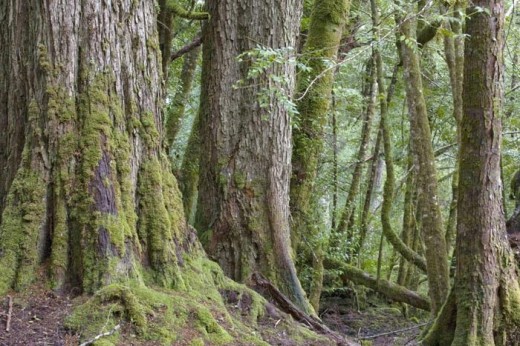 It starts with a natural forest that due to ‘humanity’ has become rare, threatened and endangered It starts with a natural forest that due to ‘humanity’ has become rare, threatened and endangered
~ Tasmania’s ancient wild Weld Forest
.
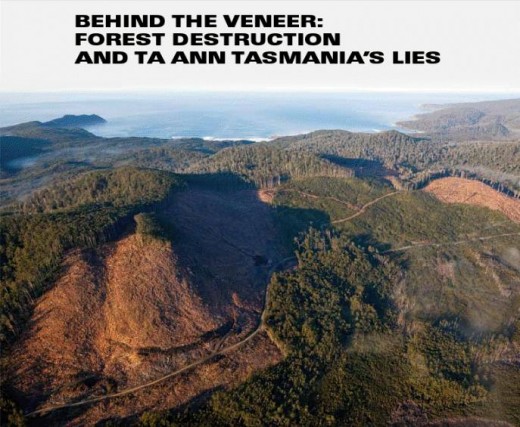 Tasmanian Old Growth Eucalypt Forests destroyed by Forestry Tasmania and onsold to Ta Ann
http://www.huon.org/
Tasmanian Old Growth Eucalypt Forests destroyed by Forestry Tasmania and onsold to Ta Ann
http://www.huon.org/
.
Malaysian industrial logger ‘Ta Ann Tasmania‘ (Ta Ann) has overtaken the monolithic Gunns Ltd as the biggest baddest logger of Tasmanian native Eucalypt forests and is busy enticing new overseas markets to flog Tasmanian Eucalypt timber.
Ta Ann claims that it exports rotary peeled veneer manufactured only from regrowth and plantation Eucalypt logs supplied by Forestry Tasmania, boasting its logging operations and timber products as environmentally sustainable.
But the reality is that Ta Ann is sourcing timber from Tasmanian old growth forests, from world heritage value and high conservation value forests.
As many Tasmanians are well familiar, Tasmanian Government impune Forestry Tasmania has an internal cultural penchant do anything to log and flog Tasmanian forests to perpetuate its own survival. Tasmanian legislation allows it to log, slaughter and rule with impunity like a forestry Mugabi, Gaddafi or Pol Pot. Forestry Tasmania is accountable only unto itself.

In 2008, AusIndustry even awarded Ta Ann winner of the Emerging Exporter Award for building its new flooring ply market in Japan flogging Tasmanian Eucalypt forest timber, all on the presumption that Ta Ann’s chain-of-custody certification was assured and legitimate. But was it and is it?
Tasmania’s big business biased history has shown that the promise of lots of local jobs by alluring big business causes dizzy evangelism by naive high school politicians, which then abandon ethics and Tasmanian community pride for the promise of the big buck. Traditional Tasmanian timber asset and its passionate local craftsmanship have been repeatedly betrayed by short-termism party politicians to cheap asian woodchipping mentality.
The latest Tas-rapist is ‘Ta Ann’ owned by exploitative unscrupulous Malaysian logger mogul Abdul Hamed Sepawi. He treats Sarawak indigenous locals like scum, so why would he feel any different to Tasmanians? – be it old growth forests, timber workers, their families, Tasmania’s economy or rural society?
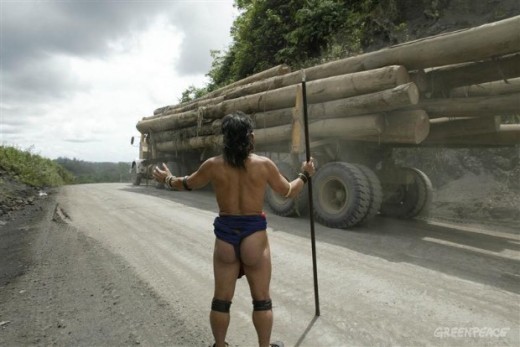 Indigenous Sarawak of Borneo seeing their forests go to Abdul’s Malaysian industrial loggers Indigenous Sarawak of Borneo seeing their forests go to Abdul’s Malaysian industrial loggers
.
Abdul is into logging Tasmanian forests for his own empire. Those Tasmanians participating in Ta Ann operations are not only feeding an asian mogul’s personal wealth, they are selling Tasmania’s unique forest assets, accepting pittance pay, and watching the asian mogul smile.
 Malaysian’s Logger Mogul… Greedy Abdul Malaysian’s Logger Mogul… Greedy Abdul
.
One day Tasmanians working in forestry will acknowledge that the radial feral greenies are not their adversaries but indeed more Tasmanian patriotic than their asian logging employers and Tasmanian Labor’s soul-selling politicians.
It is time Tasmania’s skilled woodcraftsmen had their say over the unethical, self-perpetuating and uncontrolled smiling eco-rapists of Forestry Tasmania and its exploitative asian logging moguls.
 Smiles of the asian woodchipper and Tasmanian soul seller Smiles of the asian woodchipper and Tasmanian soul seller
.
Based on the claim of ‘forestry certification’ legitimacy, Ta Ann has been locally encourage to build its second timber mill at rural Smithton in north-west Tasmania to supply emerging flooring ply/veneer markets in Malaysia, Japan and China.
.
[Source: ^ http://www.exportawards.gov.au/Resources/Case-Studies/Ta-Ann-Tasmania/default.aspx]
.
.
However, Tasmania’s forest campaigners Jenny Weber and Peg Putt have exposed Ta Ann Tasmania’s timber source to some of their customers in Japan, in alliance with Japanese forest campaign organisation JATAN. Meetings have been held with flooring manufacturer Panasonic Electric Works and Japan’s largest house building companies, Sekisui House and Daiwa House.

Huon Valley Environment Centre’s Jenny Weber with International Forests and Climate campaigner and former leader of the Tasmanian Greens Peg Putt, also met with Japanese and international NGO’s who are focused on forest protection, whilst visiting Japan. A media conference was held in Tokyo.
‘Huon Valley Environment Centre released a report in October that exposes Ta Ann has sourced timber in Tasmania from world heritage value, old growth and high conservation value forests. Ta Ann and their Japanese partner claim that their timber from Tasmania is only sourced from plantations and regrowth forests. Our message to the customers of Ta Ann was that the source of the company’s timber has been misrepresented,’ Huon Valley Environment Centre’s Jenny Weber said.
Companies such as Panasonic Electric Works, Sekisui House and Daiwa House have set goals to procure environmentally friendly timber, whose production does not contribute to large scale logging, nor harm biodiversity or the climate.
.
‘Informing these companies about the ecologically destructive logging practices in Tasmania and the reality that Ta Ann is sourcing timber from old growth, world heritage value and high conservation value forests was a shock to the companies who believe the timber source is environmentally friendly, who had been misled and in some cases thought that Ta Ann’s veneer was plantation grown,’ Jenny Weber said.
‘Even worse Ta Ann is standing in the way of full protection of 572,000 hectares identified for reservation in the Intergovernmental Agreement on Tasmania’s forests, and this company is implicated in environmental and human rights abuses in Sarawak. It was important to inform Japanese customers of the potential reputational damage involved in their relationship with Ta Ann,’ Peg Putt said.
‘Ta Ann in Tasmania is now going to be a focus of our campaign, following our successful collaboration with Australia NGO’s over the woodchip trade between Tasmania and Japan. I have visited forests in Tasmania that have been logged for Ta Ann in Tasmania, and witnessed the forest destruction on many occasions,’ said Akira Harada of JATAN.
.
[Source: ‘Tasmania’s forest campaign goes global – Ta Ann Exposed to Customers in Japan, 20111015, Huon Valley Environment Centre, Tasmania]
.
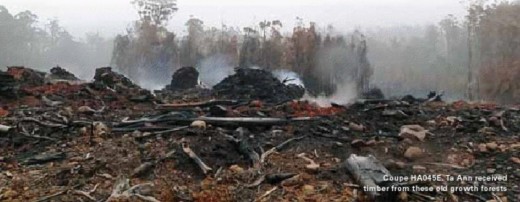 Forestry Tasmania Coupe HA045E was Eucalypt old growth
Ta Ann received timber from this coupe, which therefore annuls its ‘Sustainable Timber’ Certification Forestry Tasmania Coupe HA045E was Eucalypt old growth
Ta Ann received timber from this coupe, which therefore annuls its ‘Sustainable Timber’ Certification
.
Read the Huon Valley Environment Centre’s 2011 Report: ^http://bit.ly/mRlUbs
.
.
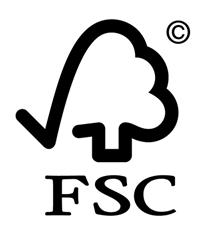
The Huon Valley Environment Centre’s 2011 Report needs to be investigated by the Forestry Stewardship Council (FSC) Australia with the support of the Australian Government, because the report calls into question the credibility of Australia’s timber exports having a certification chain-of-custody. If the Huon Valley Environment Centre’s report is true, and there is no doubt that it isn’t, then Ta Ann’s business model is relying upon a fraud, meaning its entire market risks unraveling, along with the 120 or so Tasmanian timber jobs it supposedly supports.
FSC certification and labeling is supposed to guarantee to end consumers that such timber products and materials have been harvested, processed and manufactured in a sustainable fashion – complying with sound forest management standards and principals. The FSC label is the gold standard in forest management and sustainable wood products.
FSC products are denoted by the FSC label. The right to use this label on a product means that a company must comply with all of the FSC requirements for management and operations. The requirements set forth by the FSC are based on 10 principles and 56 criteria.
.
The principles that guide FSC certification are as follows:
.
Principle 1. Compliance with all applicable laws and international treaties
Principle 2. Demonstrated and uncontested, clearly defined, long–term land tenure and use rights
Principle 3. Recognition and respect of indigenous peoples’ rights
Principle 4. Maintenance or enhancement of long-term social and economic well-being of forest workers and local communities and respect of worker’s rights in compliance with International Labour Organisation (ILO) conventions
Principle 5. Equitable use and sharing of benefits derived from the forest
Principle 6. Reduction of environmental impact of logging activities and maintenance of the ecological functions and integrity of the forest
Principle 7. Appropriate and continuously updated management plan
Principle 8. Appropriate monitoring and assessment activities to assess the condition of the forest, management activities and their social and environmental impacts
Principle 9. Maintenance of High Conservation Value Forests (HCVFs) defined as environmental and social values that are considered to be of outstanding significance or critical importance
Principle 10. In addition to compliance with all of the above, plantations must contribute to reduce the pressures on and promote the restoration and conservation of natural forests.
.
FSC Chain of Custody Certification
Chain of custody (CoC) certification allows manufacturers who process and trade in timber and other non-timber forest materials to trace and account for the FSC certified wood in their products. Companies with FSC CoC certification can label products with the FSC label if they comply with the standards.
.
[Source: ^http://www.green3dhome.com/GoGreen/FSCCertificationandLabeling.aspx]
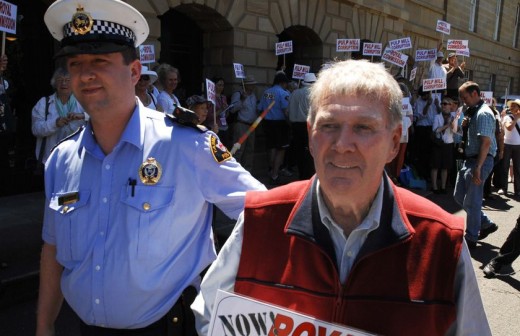 Gardening guru Peter Cundall prepared to be arrested for Tasmanian Principle
to defend Tasmania’s Forests and Tasmania’s democracy protesting against a pulp mill.
(19 Nov 2009)
Gardening guru Peter Cundall prepared to be arrested for Tasmanian Principle
to defend Tasmania’s Forests and Tasmania’s democracy protesting against a pulp mill.
(19 Nov 2009)
.
Watch on You Tube: http://www.youtube.com/watch?v=OVRhUtJBjxc
.
.
If the Huon Valley Environment Centre’s report is true then it would mean that Forestry Tasmania is complicit in Sustainable Timber Certification fraud and it would make Australia’s Emerging Exporter Award a joke.
Australia’s Emerging Exporter Award is a national Australian programme jointly run by The Australian Trade Commission (Austrade) and the Australian Chamber of Commerce and Industry (ACCI), which recognises and honours exporters who have achieved sustainable export growth through innovation and commitment. It celebrates and highlights the valuable contribution that exporters make to Australia’s economy, and encourages other companies to engage in international business. The programme objectives even states that it is to ‘promote Australia’s leading exporters to the same status and public recognition as sporting and entertainment heroes’. So Ta Ann is up there with Donald Bradman?
But Ta Ann Tasmania is a Malaysian multinational corporation and all profit go to overseas to its Malaysian logging mogul, Abdul Hamed Sepawi. Ta Ann, has not only been destroying rainforests in Sarawak but has been invited to pillage Tasmanian old growth Eucalypt forests by yours truly, Forestry Tasmania. So how can this venture be beneficial for Australia except for the so-called ‘export revenue’ making government export performance look good on paper?
.
‘Ta Ann is the biggest hardwood timber company in the world in terms of market capitalization. It has been able to achieve this through its close ties with the corrupt Chief Minister of Sarawak, Abdul Taib, whose vast wealth and power has been amassed through the strategic distribution of timber concessions. Taib is also finance minister and planning and resource management minister.
Earlier this month (March 2011) , the European NGO “Bruno Manser Fonds” (founded by the Swiss activist of Bruno Manser who lived in the jungle with the Penan from 1984 to 1990 and shared their struggle before mysteriously disappearing in Sarawak in 2000) released a blacklist of 49 companies in 8 countries (10 of them based in Australia) and is urging anti-corruption and anti-money laundering authorities in these countries to investigate any improprieties.
This is being reported in the Malaysian press as follows: “According to Malaysia’s Democratic Action Party (DAP), Taib has failed to account for a staggering 4.8 billion Malaysian ringgits (1.58 billion US dollars) of Sarawak state funds over the past three years alone. In 2007, the Tokyo tax authorities uncovered a massive corruption scheme that involved the payment of kickbacks to the Taib family. In return, nine Japanese shipping companies had received export licences to carry logs to Japan, Sarawak’s largest timber export market.” . And so on.
Ta Ann Holding’s chairman is Taib’s cousin, Abdul Hamed Sepawi. In 2008, Forbes listed Sepawi as the 30th richest man in Malaysia. Ta Ann holds 408,366 hectares of timber concessions, including the Raplex and Pasin timber concessions, which were previously controlled by Taib. They are also heavily engaged in the establishment of industrial tree plantations and oil palm plantations on Native Customary Land In Malaysia.
As Tasmania’s main newspaper, The Mercury reported on Sat Nov 8 2008 p11: “Ta Ann was lured to Tasmania by the cheap timber price offered by Forestry Tasmania. Ta Ann chairman Datuk Hamed Sepawi told Tasmanian media in 2006 that hardwood from this state was cheaper than wood from Malaysian and Indonesian forests…. Ta Ann’s deal with the State Government locked in the price it would pay for the timber at the 2006 level for the next 15 years.”
Ta Ann has a wood supply contract for 265,000 m3 a year. It is estimated that Ta Ann is paying approximately US$50 per cubic meter for these logs at a fixed price and then selling the product for US$387 per cubic meter.’
.
[Source: The Southern Forests Convergence: Conservation in Tasmania’ by John Seed, <Living Green Magazine, ^http://www.livinggreenmag.com/archives/climate_nature/southern_forests.html]
.
.
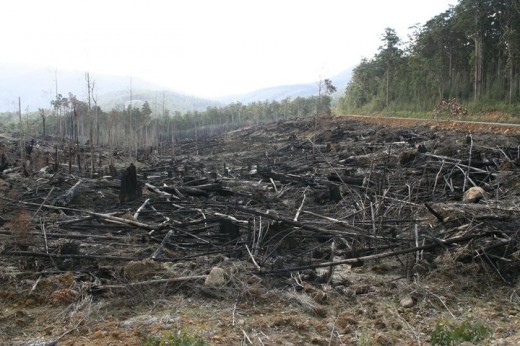
The Huon Valley Environment Centre and Still Wild Still Threatened are Tasmanian grassroots conservation organisations committed to ending logging in Tasmania’s old-growth forests.
.
“Our organisations are committed to continuing the campaign to call for the immediate protection of all native forests in Tasmania, including a moratorium on the globally significant high-conservation-value forests and a swift transition out of native forest logging in Tasmania.” ~ Jenny Weber
.
Three protests were held around Hobart yesterday (26th March 2011) as part of the 10-day vigil by the Huon Valley Environment Centre and Still Wild Still Threatened groups to stop logging in old-growth forests.
Four protesters were arrested outside the Ta Ann Hobart office yesterday morning during a sit-in demonstration against Ta Ann’s alleged illegal activity in Sarawak.
.
[Source: ‘Police anger over protest‘, by Brian Ward, Hobart Mercury, 20110326, ^http://www.themercury.com.au/article/2011/03/26/217591_tasmania-news.html]
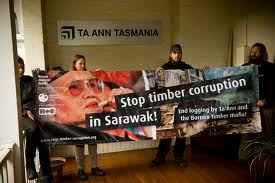
.
.
Tasmanian protests ongoing to save Tasmanian Forests
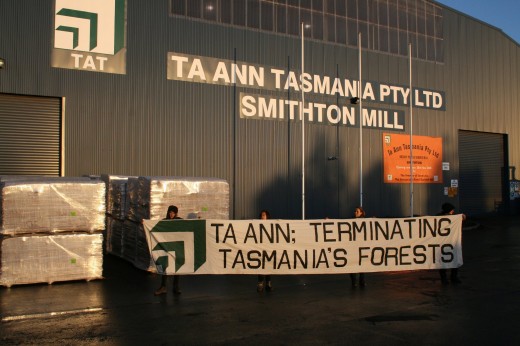 Ta Ann’s mill at Smithton Ta Ann’s mill at Smithton
.
This morning, grassroots forest groups the Huon Valley Environment Centre, Still Wild Still Threatened and Code Green have taken action at the Ta Ann veneer mill in Smithton. Twelve conservationists entered the site at 6am and two activists are locked on to machinery, halting operations. The protestors are displaying a banner reading ‘Ta Ann terminating Tasmanian forests‘.
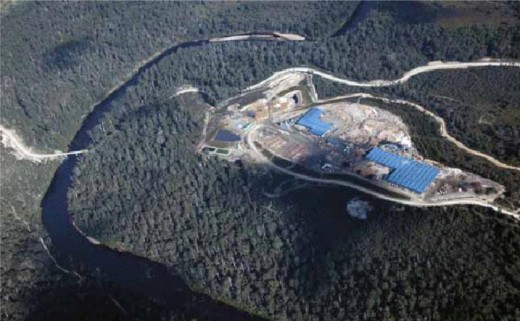 Ta Ann’s mill carved into the forests in Tasmania’s Huon Valley Ta Ann’s mill carved into the forests in Tasmania’s Huon Valley
.
This action takes place in response to Ta Ann’s role in blocking a solution for Tasmania’s forests. Grassroots environment groups are raising concerns over yesterday’s Intergovernmental Agreement on forest.
“We are aware of Ta Ann’s shocking environmental and human rights practices in Sarawak and we are raising the question to the State and Federal government – why is this exploitative Malaysian company allowed to continue destroying our forests and threaten Tasmania’s chance to move forward to a sustainable industry?” said Code Green spokesperson, Joanna Pinkiewicz.
.
“Yesterday’s agreement guarantees Ta Ann’s contract until at least 2027.
This Malaysian logging giant has a deplorable record in (Indonesia’s) Sarawak and are now entrenching large scale clear felling of native forests in Tasmania”
.
~ Huon Valley Environment Centre spokesperson Jenny Weber.
.
“The intergovernmental Agreement leaves open over 140,000 hectares of identified high conservation value forest to potential logging. Contracts with companies such as Ta Ann could jeopardise the future protection of high conservation value forests, with further reductions to the reserve area still on the table” said Still Wild Still Threatened spokesperson Miranda Gibson.
“While we look forward to seeing high conservation value forests protected, the real hurdles are yet to come. This agreement is a first step that has not yet guaranteed formal protection of these forests, that is long overdue” said Ms Weber.
.
[Source: ‘Ta Ann Mill Shut Down‘, 201108122, ^http://hornbillunleashed.wordpress.com/2011/08/12/22368/]
.
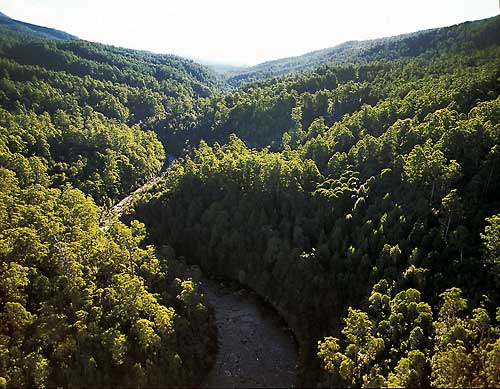 Tasmania’s Weld Valley – being logged by Ta Ann
(Photo by Rob Blakers)
http://www.water-sos.org/rob-blakers4.html Tasmania’s Weld Valley – being logged by Ta Ann
(Photo by Rob Blakers)
http://www.water-sos.org/rob-blakers4.html
.
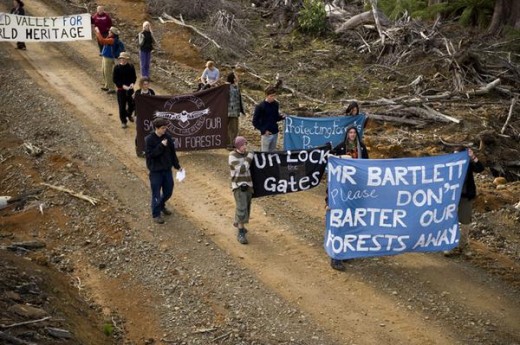 Human Plea Human Plea
.
.
Tags: 572000 hectares, Abdul Hamed Sepawi, Chain of Custody certification, Daiwa, eco-rapists, Emerging Exporter Award, Forestry Stewardship Council, Forestry Tasmania, FSC International, Huon Valley Environment Centre, Intergovernmental Agreement, JATAN, log and flog Tasmanian Rorests, old growth forest, Panasonic Electric Works, Peter Cundall, Sarawak, Sekisui, Ta Ann Tasmania
Posted in Kalimantan (ID), Tasmania (AU), Threats from Deforestation, Threats to Wild Tasmania | 1 Comment »
Add this post to Del.icio.us - Digg
Friday, October 21st, 2011
 Stihl Concrete Saw Stihl Concrete Saw
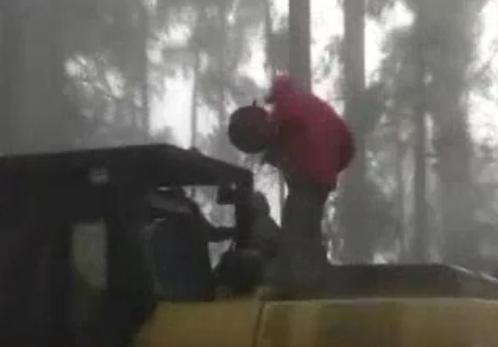 Stihl Saw Nutter – contracted with Forestry Tasmania, October 2008 Stihl Saw Nutter – contracted with Forestry Tasmania, October 2008
(Click photo above to play video in YouTube, turn up your PC volume)
.
 Stihl President – Fred Whyte
(Billings Gazette) Stihl President – Fred Whyte
(Billings Gazette)
.
In September 2010, Fred J. Whyte, president of STIHL Inc., was elected chairman of the Outdoor Power Equipment Institute (OPEI) during the association’s 58th annual meeting in Coeur D’Alene, Idaho.
.
“I am honored to again represent STIHL and the outdoor power equipment industry as chairman of the OPEI board,” said Whyte.
“In this next year, we hope to accomplish a lot, especially in the realm of educating the public on the safe and efficient use of outdoor power equipment. We are seeing gains in the market, which should be welcome news to all OPEI members. Let’s hope we return to our market prosperity with new sustainable programs and products that will lead us into the next generation.”
.
[Source: Stihl USA, ^http://www.stihlusa.com/pressrelease/september10_FJWOPEI_corporate.aspx]
.
.
Two years prior (2006) …’Defending Tasmania’s ancient forest’
.
[Source: Tasmanian Times, 20061106, ^http://tasmaniantimes.com/index.php?/article/defending-tasmanias-ancient-forest/ ]
.
‘This week has marked a new chapter in the defence of Tasmania’s ancient forests with 17 arrests in the Weld Valley, Southern Tasmania.The arrests occured whilst community members were trying to prevent an access road that will allow the chainsaws into majestic ancient forests.The Weld Valley has now become one of the largest resistance campaigns for Tasmania’s forests in the last decade. Community outrage at this senseless devastation is challenging the Tasmanian and Australian governments to give these wilderness forests the protection they deserve.
For more than a year, forest defenders built and lived in a beautiful conservation haven that worked to hold the chainsaws and bulldozers at bay. Camp Weld, had a full size replica Pirate ship (the Weld Ark), a bush cabin and the entire infrastructure needed to provide shelter and support to friends of the forest. The camp had a village style atmosphere and was open to all comers who wanted to help the forests in their plight. Camp Weld members faced not only the hostility of the weather, the driving rain, winter dark and snow but also the very real hostility and threats from logging industry supporters.
.
‘Through the year, Camp Weld faced gun shots, car burnings and physical threats from loggers coming directly into camp.’
.
All this was greeted with the strength and commitment of non-violent action and this peaceful response is a testament to the bravery and beauty of the people who lived there.
On Wed 15th November 2006, more than 60 Police raided the camp with one immediate arrest and a lone tree-sitter escaping to her lofty perch.Everyone else was ordered to leave or face arrest under a new media and public exclusion zone placed around a 10 kilometre radius of this state owned forest. For the next 6 days a set of rolling actions began and continue, flowing from the anger at the loss of such a direct action icon and the coming loss of these wondrous forests. People climbed tree-sits, stood in front of machines and some forest defenders locked theselves on to machinery. These actions occurred day after day as the arrest tally climbed to the present 17.
.
For 5 days, the lone tree sitter ‘Pixie’ sat in her high platform watching the events unfold..
Two other forest defenders spent nights in jail as Police used legal tactics to try and prevent the arrestees from returning to the forests. The Tasmanian government has funded this operation to secure access for Gunns Ltd, providing large numbers of police, security, a 24 hour mobile operations base and satellite communications equipment, all to ensure that the bulldozers get into the forest. Yet despite these obstacles people continue to challenge the destruction in a peaceful and defiant manner.
.
Classic non-violent style
.
On two separate occasions, a community walk in was staged to defy the archaic exclusion zone created on public land. The first walk in had 40 people, the second over 100. These were great days for the forests as smiling people walked past security and police, in classic non-violent style. The strength in numbers meant that the police were unable to implement the exclusion zone procedures, which involves individually approaching each person in the zone. The veil over this hideous environmental crime had been lifted.This type of protest has occurred because of the continued failure of the Regional Forest Agreement (RFA) and the subsequent Community Forest Agreement, which were set up under the pretence to solve the forest debate in Tasmania. In fact, things in the forest have gotten worse, roads continue to be cut into high conservation value forests and logging is planned for many high conservation value forests and wilderness areas across the state. A downturn in the woodchip market has not deterred the world largest hardwood woodchipper, Gunns Ltd from continuing their devastation of the island’s wildlife and trees. Their aggressive response to criticism is to sue conservationists and environmental groups with a blanket multi-million dollar civil case.This almost billion dollar company and its $65million man, John Gay, have a strangle hold on the states politicians and its old growth forests.
The Weld Valley is a shining example of places ignored by the chainsaw mandate of the RFA; it is an ancient forested valley of towering trees, moss filled rainforest gullies, snow-capped mountains, wide plains, crystal clear streams and wild Weld river. The original Tasmanians wandered this valley some 20,000 years ago evidence of their lives still remain in the national park protected ‘Bone Cave’ in the upper Weld. The potential for more sites or caves remains unexplored in much of the logging slated lower Weld Valley. While some 80% is protected in the South West World Heritage Area, the remaining forests suffer a very different fate to those separated by the imaginary protection line.
These remaining forests of the lower Weld Valley have been recognized by local and international environmental groups, the United Nations and even Tasmania’s Parks and Wildlife as having equal conservation status to the rest of the valley. Viewed as a single wilderness area, the Weld Valley is a unique landform which has a rare combination of outstanding biological, geological and cultural features naturally linked by continuous forest to the World Heritage Area.
Direct action has always been an area of last resort for conservationist. Brave and often reluctant heroes staff this front line with sometimes little more than their own bodies. Placing lives on hold and committing all for the forests. Basing actions on non-violent principles, that has served people and social movements like Gandhi, the Suffragettes, the Civil Rights struggle and our own Franklin River campaign. As long as companies like Gunns Ltd are allowed, by governments, to ignore community concern and run rampant through our ancient forests with chainsaws and bulldozers then there will always be people willing to stand in their defence.’
.
[Adam Burling is a founding member of the Huon Valley Environment Centre, a part time advisor to Senator Bob Brown and a Gunns 20 defendant.]
.
Tags: activists, Camp Weld, Caterpillar, Community Forest Agreement, Direct action, forester violence, Forestry Tasmania, Fred Whyte, Logging, Martin Bryant, old growth forest, Outdoor Power Equipment Institute, stihl chainsawing old-growth, STIHL Inc., Stihl President, Stihl Saw, Stihl Saw Nutter, Stihl woodchipping old growth, Tasmanian Police, Weld Valley, William Adams, World Heritage Area, www.stihlusa.com
Posted in Tasmania (AU), Threats from Deforestation, Threats to Wild Tasmania | No Comments »
Add this post to Del.icio.us - Digg
Thursday, October 13th, 2011
If you go down into the woods today you’re sure in for a big surprise…but in Tasmania’s South-West it ain’t no teddy bear’s picnic.
One has to first get past the many infamous locked gates. Forestry Tasmania (aka the State-sanctioned corporate logger) is sure to have locked its steel gates for very good reason – Forestry Tasmania doesn’t want the public to know the truth about what it is doing to Tasmania’s remaining wild forests.
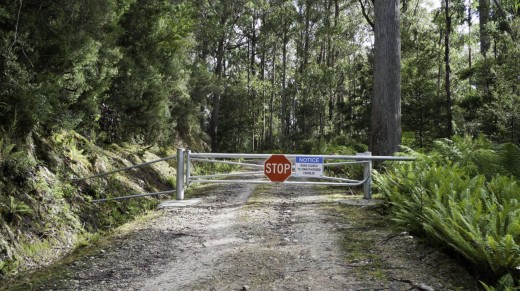 Forestry Tasmania’s locked gate on the public road to the top of Mount Tim Shea
(Suspiciously this public access road was deemed unfit for public travel coincidentally around the same time as Forestry Tasmania opened its ‘Adventure Hub’ in Maydena,
and equally coincidentally one of the hills they charge people for a ride to the top from reads ‘Adventure Hub’).
(Photo by Alan Lesheim) Forestry Tasmania’s locked gate on the public road to the top of Mount Tim Shea
(Suspiciously this public access road was deemed unfit for public travel coincidentally around the same time as Forestry Tasmania opened its ‘Adventure Hub’ in Maydena,
and equally coincidentally one of the hills they charge people for a ride to the top from reads ‘Adventure Hub’).
(Photo by Alan Lesheim)
.
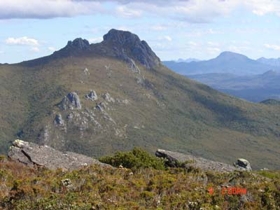 Rugged Mount Tim Shea, South-West Tasmania Rugged Mount Tim Shea, South-West Tasmania
Photo by Forestry Tasmania
^http://www.forestrytas.com.au/topics/2008/06/maydena-adventure-hub-opportunities
.
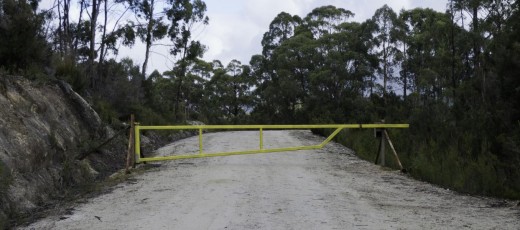 Locked Gate on Five Road in the Upper Florentine Locked Gate on Five Road in the Upper Florentine
(connects to Cook’s Track which enters the Gordon River Road short of Camp Flozza)
(Photo by Alan Lesheim)
.
Forestry Tasmania has hundreds of these padlocked gates throughout Tasmania’s wild forests.
The Wilderness Society’s spokesperson Amanda Sully said “Forestry Tasmania have a locked boom gate over the Huon Valley Wilderness and are refusing entry. This is just one of hundreds of gates on forestry roads in Tasmania.
“It’s very clear who is locking up the forests. People are sick and tired of seeing log truck after log truck coming from the clear felling behind these padlocked gates.
These are publicly-owned forests.
Forestry Tasmania is supposed to manage them for the benefit of all Tasmanians, not just the loggers” Ms Sully concluded.
.
[Source: ‘Forestry Tasmania – Locking up our forests‘, ^http://www.wilderness.org.au/campaigns/forests/19980924_mr
.
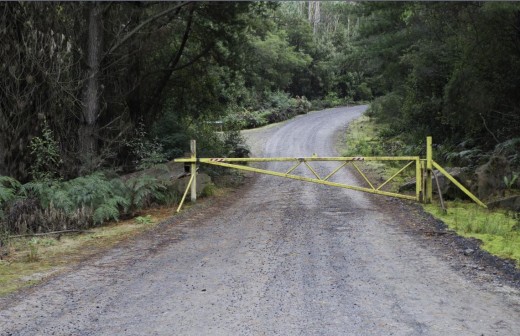 Forestry Locked Gate on Blue Road, northern section of the Upper Florentine Valley Forestry Locked Gate on Blue Road, northern section of the Upper Florentine Valley
(Photo by Alan Lesheim)
.
.
Author Anna Krien was on a quest for the truth described in her revealing expose book of 2010 into what’s stihl happening in Tasmania’s wild forests:
~
‘Most people travelling through Tasmania will never know of the long-running hide-and-seek taking place in the labyrinth of logging roads beyond the bitumen.
Sightseers walk among 300-year-old trees, some of them 90 metres tall, in the Styx Big Tree Reserve, chainsaws can be heard in the distance.
The road into this attraction is lined with stage sets of wilderness.
At the rise of a hill, just before the nose of the car tilts downwards, passengers might glimpse a balding peak, a fleeting insight into the world behind the verge.’
~
[Source: ‘Into the Woods: The Battle for Tasmania’s Forests‘, 2010 by Anna Krien pp.25-26, published by Black Inc. ^http://www.blackincbooks.com/books/woods, includes video interviews].
.
So, this Editor, half way through the book, last month flew down to Hobart, hired a car and retraced the author’s journey into Tasmania’s South-West …
.
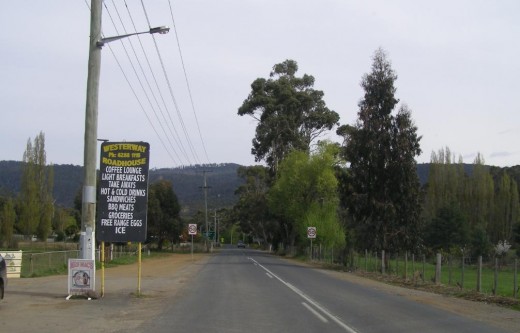 Driving west along the old Hydro Electrical Commission’s (HEC) Gordon River (Access) Road,
through Forestry’s logging town of ‘Westerway’ Driving west along the old Hydro Electrical Commission’s (HEC) Gordon River (Access) Road,
through Forestry’s logging town of ‘Westerway’
.
Noticeably, when driving out of Hobart I passed clearly wealthy residential suburbs, yet driving along the Gordon River Road these few isolated hamlets are not wealthy. Their construction mostly seems temporary like mining companies would construct while the mine delivers. The highway through the hamlets of Westerway, Fitzgerald and Maydena seems only for forest access, not for community.
I parked the car and walked through Maydena.
There is only the odd person out and about. The place seems impoverished – one small primary school, a notable lack of shops, lack of amenities, and little sign of any vibrant community.
It’s as if the profits from logging have driven right through the guts of these local villages and on to big corporations eastward.
.
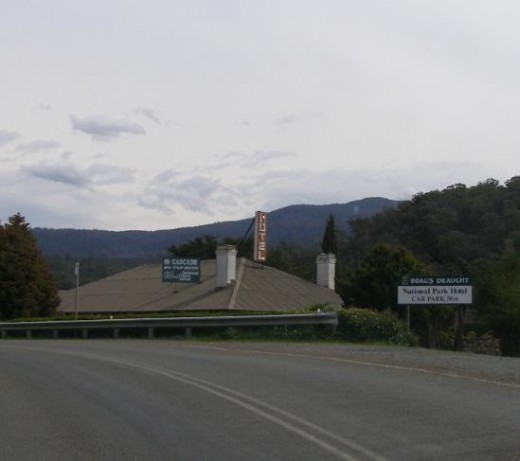 Past the National Park Hotel
where Tasmania’s champion wood-chopper ‘Big Dave’ holds pride of place above the pub’s fire place. Past the National Park Hotel
where Tasmania’s champion wood-chopper ‘Big Dave’ holds pride of place above the pub’s fire place.
.
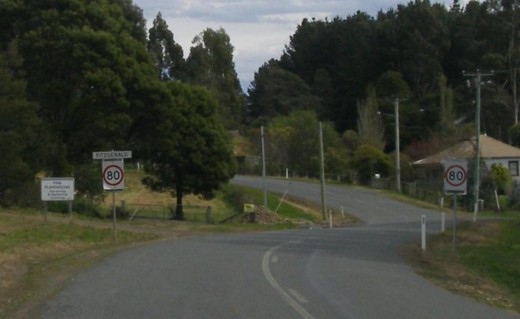 Driving through Forestry’s old logging town of ‘Fitzgerald’
. Driving through Forestry’s old logging town of ‘Fitzgerald’
.
.
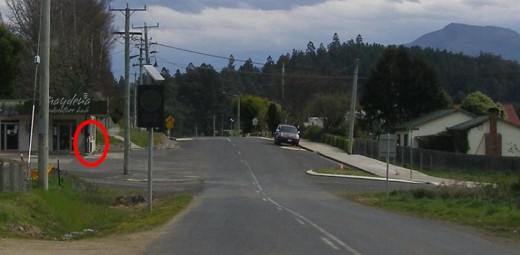 Driving through the old logging town of ‘Maydena’
– a closed so-called ‘Adventure Hub’ on the left, yet its diesel bowser (circled) open for Forestry Tasmania vehicles and observed in used by Editor 20110928. Driving through the old logging town of ‘Maydena’
– a closed so-called ‘Adventure Hub’ on the left, yet its diesel bowser (circled) open for Forestry Tasmania vehicles and observed in used by Editor 20110928.
.
Reminiscent of Australia’s 1850s Gold Rush, Tasmanian folk would have been lured west by Forestry to the promise of bountiful tall timber delivering reliable logging income and the promise of building personal wealth.
But along the Gordon River Road there is a stark absence of Forestry wealth. Instead it seems Forestry has abandoned these Gordon River Road communities.
What Forestry has done is to sell out Tasmania’s traditional woodcraft industry for short term profit from flogging quality Tasmanian hardwood as cheap asian woodchips, destroying Tasmania’s forests timber communities in the process. Then Gunns got greedy and Tasmania’s timber reputation has deteriorated thereafter.
Now Forestry Tasmania are clearfelling and selling out Tasmania’s rare forests to the asians direct, to the likes of Ta Ann. Forestry Tasmania is no more than a corporate pimp of Tasmanian rare forest heritage.
.
“The road into this attraction is lined with stage sets of wilderness.”
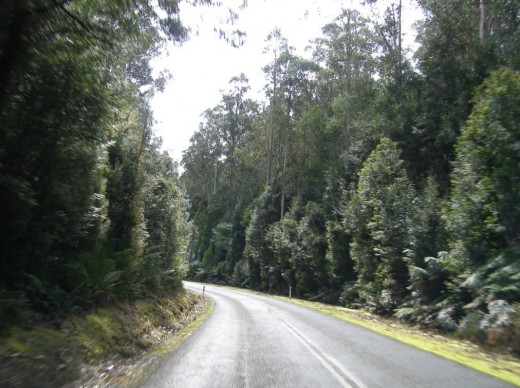 Driving further west along the HEC Gordon River Road
– bulldozed in 1964 through 64km of pristine wilderness forest by the Hydro Electric Commission, and
funded by the then Menzies federal government at a cost of £2.5 million (likely twenty times that in today’s terms – i.e. $50 million.
. Driving further west along the HEC Gordon River Road
– bulldozed in 1964 through 64km of pristine wilderness forest by the Hydro Electric Commission, and
funded by the then Menzies federal government at a cost of £2.5 million (likely twenty times that in today’s terms – i.e. $50 million.
.
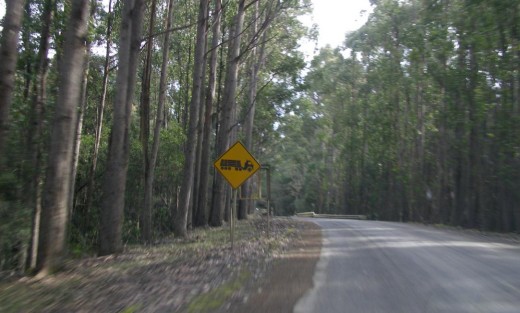 Gordon River Road – signposted logging country Gordon River Road – signposted logging country
.
“At the rise of a hill, just before the nose of the car tilts downwards, passengers might glimpse a balding peak”
 The balding peak of Forestry Tasmania’s cable logging…’a fleeting insight into the world behind the verge’.
(Photo by editor 20110928 while on Gordon River Road heading west) The balding peak of Forestry Tasmania’s cable logging…’a fleeting insight into the world behind the verge’.
(Photo by editor 20110928 while on Gordon River Road heading west)
.
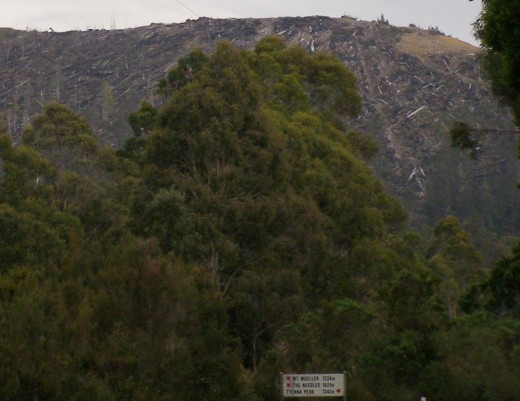 An entire hill of wild Tasmanian forest savagely cabled logged bare by Forestry Tasmania
Tourists can now see this from Gordon River Road.
(Photo by editor 20110928. Click photo to enlarge.)
An entire hill of wild Tasmanian forest savagely cabled logged bare by Forestry Tasmania
Tourists can now see this from Gordon River Road.
(Photo by editor 20110928. Click photo to enlarge.)
.
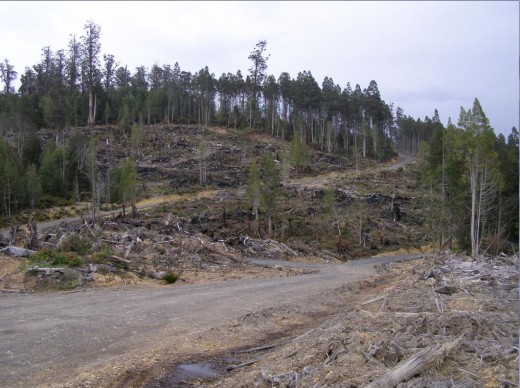 Beyond the lock gates lies the ecological holocaust
(Photo by editor 20110928. Click photo to enlarge.) Beyond the lock gates lies the ecological holocaust
(Photo by editor 20110928. Click photo to enlarge.)
.
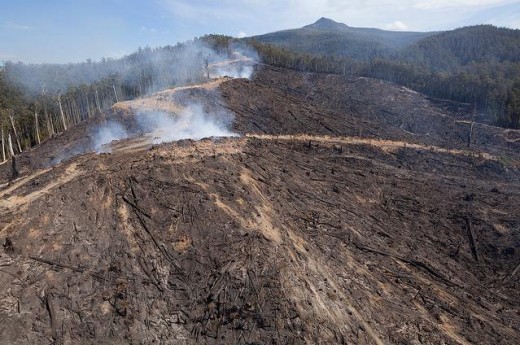 Styx Valley Holocaust
(Photo by Rob Blakers) Styx Valley Holocaust
(Photo by Rob Blakers)
.
 Tasmania’ s Styx Holocaust
September 2011 (Photo by Alan Lesheim)
Tasmania’ s Styx Holocaust
September 2011 (Photo by Alan Lesheim)
.
 Forestry Tasmania’s Killing Fields
Forestry Tasmania’s Killing Fields
.
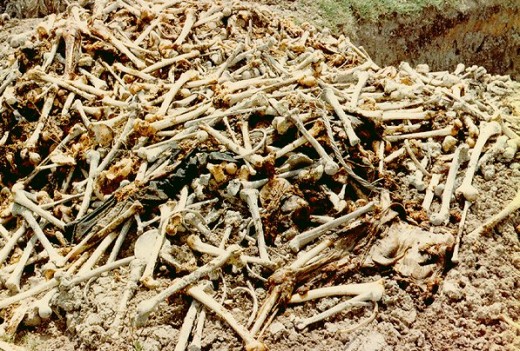 Cambodia’s Khmer Rouge Killing Fields
(Human mass murder comparable to Tasmania’s mass forest murder
– both crimes consistently against life) Cambodia’s Khmer Rouge Killing Fields
(Human mass murder comparable to Tasmania’s mass forest murder
– both crimes consistently against life)
.
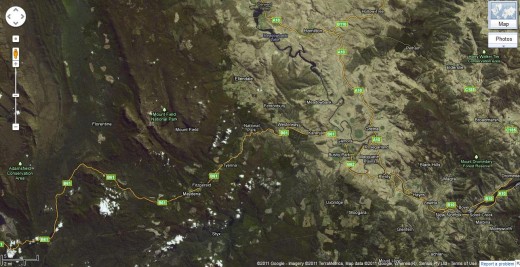 Google Maps (September 2011) satellite view of the forest rape by Forestry Tasmania
.
Google Maps (September 2011) satellite view of the forest rape by Forestry Tasmania
.
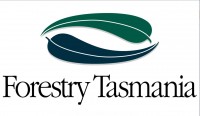 . .
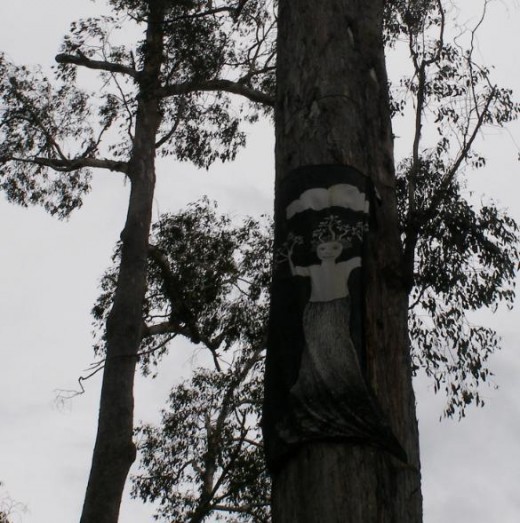 Camp Flozza’s symbolic goddess of the ancient Florentine Forest
~ eco-raped by Forestry Tasmania in its January 2009 raid
Camp Flozza’s symbolic goddess of the ancient Florentine Forest
~ eco-raped by Forestry Tasmania in its January 2009 raid
.
 And they wonder why the people protest and are prepared to be arrested?
(Photo of forest defender being arrested at Forestry Tasmania’s police raid on Camp Flozza,
Upper Florentine Valley, 13th January 2009) And they wonder why the people protest and are prepared to be arrested?
(Photo of forest defender being arrested at Forestry Tasmania’s police raid on Camp Flozza,
Upper Florentine Valley, 13th January 2009)
.
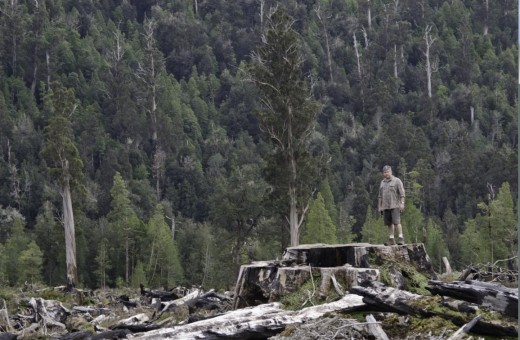 Styx Valley Holocaust by Forestry Tasmania, September 2011
(Photo of editor 20110928. Click photo to enlarge.)
Styx Valley Holocaust by Forestry Tasmania, September 2011
(Photo of editor 20110928. Click photo to enlarge.)
.
.
Forestry Tasmania padlocks gates 10 kilometres from clearfell around a protected Wedge-tailed Eagle nest
[Source: ‘Loggers breach eagle nest protection laws again‘, Bob Brown, 20090827, ^http://bob-brown.greensmps.org.au/category/issues/environment/forestry/wielangta]
‘In the breeding season, a clear felling operation in Tasmania’s wild Upper Huon Valley has breached guidelines by smashing down forests next to an endangered Tasmania’s Wedge-tailed eagles’ nest. The Tasmanian Wedge-tailed eagle, with wingspan up to 3 metres, are one of the Earth’s 6 largest eagle species.

“After repeated controversies about woodchip operations burning or destroying eagle nests and causing failure of nesting because of bulldozers and chainsaws operations near nests, this failure of protection in the Huon is inexcusable. It makes a mockery of logging industry propaganda,” said Australian Greens Leader Bob Brown.
“The Ministers for Forestry and Environment who are responsible for Australia’s rare and endangered species don’t know, and don’t act in any helpful way.”
“It is as if the Howard Government never left office. These ministers have washed their hands of their role in the Wedge-tailed eagles’ fate. Logging laws in Tasmania state that a minimum of 10 hectares be left around an eagle’s nest,” said Senator Brown.
Forestry Tasmania has erected locked gates 10 kilometres from the nest logging site preventing public or media inspection.’
.
Footage of the logged area and nest available here (on YouTube):

.
.
Meanwhile Forestry Tasmania on its ‘Adventure Forests‘ website promotes its ‘Top of the World Tour‘ from Maydena…

…’Go wild where eagles soar…Make the escape to the Eagle’s Eyrie on a Top of the World Tour.You’ll experience all the fun of the Railtrack Rider as you travel into the heart of the forest to explore long-abandoned bush heritage, before emerging to an alpine wonderland and an eagle’s eye view over the Tasmanian wilderness. There’s plenty of time for indulgence as well, with an individually-prepared gourmet lunchbox and fine regional wines enjoyed in the fireside comfort of the Eagles Eyrie.’
^http://adventureforests.com.au/maydena
.
.
‘The real voyage of discovery consists not in seeking new landscapes
but having new eyes’
~ Marcel Proust, French novelist
Tags: Anna Krien, Cable Logging, Camp Flozza, deforestation, Fitzgerald, Florentine Valley Holocaust, Forestry Holocaust, Forestry Locked Gates, Forestry Tasmania, Gordon River Road, having new eyes, Into the Woods, Maydena, Maydena Adventure Hub, Mount Tim Shea, National Park hotel, Styx Big Tree Reserve, Styx Forest, Styx Valley, Styx Valley Holocaust, Ta Ann, Tasmania, Tasmania's Ancient Forests, Tasmania's South West, Tasmania's Wild Forests, Upper Florentine Forest, Wedge-tailed Eagle, Westerway, wild forests
Posted in Eagles, Tasmania (AU), Threats from Deforestation, Threats to Wild Tasmania | No Comments »
Add this post to Del.icio.us - Digg
Monday, October 10th, 2011
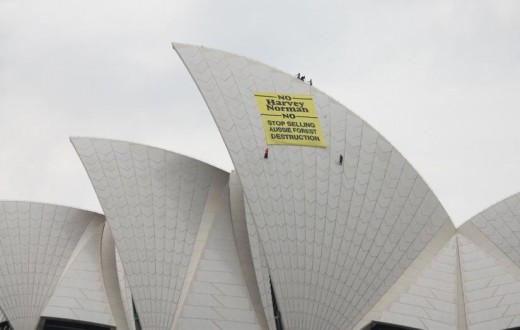 Last Saturday, forest activists scaled Sydney’s Opera House and unfurled a huge banner reading: Last Saturday, forest activists scaled Sydney’s Opera House and unfurled a huge banner reading:
‘No Harvey No! Stop selling Aussie forest destruction’!
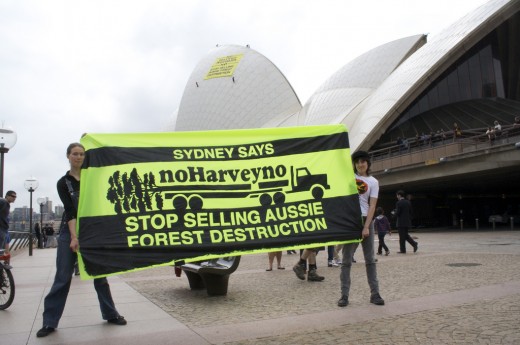
“We have come to the centre of Sydney to send a clear message to Harvey Norman that profiting from the destruction of our spectacular forests is absolutely unacceptable’ said Ula Majewski, spokesperson for The Last Stand.”
‘Our internationally iconic Aussie forests are still being destroyed by industrial logging operations. We are taking peaceful action from the top of another great Aussie icon to tell Harvey Norman that selling Aussie forest destruction is no way to do business’ said Miranda Gibson, currently perched atop the Opera House..
~ The Last Stand Inc.
^http://www.thelaststand.org.au
[Source: ^http://tasmaniantimes.com/index.php?/weblog/article/forest-activists-scale-the-sydney-opera-house/]
.
 
.
Why do forest activists scale the Sydney Opera House to protest their message?

They personally risk their lives, are arrested, put in gaol; and in these days of corporate background checks, are denied corporate employment for the rest of their lives.
How many of our readers realise the seriousness of these young people and their moral custodial commitment to fighting for the protestion of Australia’s remaining and irreplaceable ancient forest ecosystems? Australia’s youth represent and prepared to be incarcerated to protect Australia’s natural heritage. These protesters in generations to come, when the economic bigotry has died, will be venerated as Australian diggers defending what is uniquely Australian.
While the mainstream media are more interested in a commercial football match in Auckland that comes around and goes around, the vicious industrial lumberjacks in Forestry Tasmania, Forestry Victoria, and Forestry New South Wales (or whatever their rebranded name) are daily decimating vast hectares of Australia’s wild native forests. This State-sanctioned ecological massacre of old growth forests is the core reason why Australia has been internationally degraded with a backward reputation for recording the highest rates of wildlife extinction in the 21st Century. Australia is down their in ecological degradation with Zimbabwe, Rwanda and Mozambique.
Why do forest activists scale the Sydney Opera House to protest their message?
Well, start to appreciate the grassroots struggle that has for years been unreported by the mainstream media…
.
‘Conservationist halt roading operations in the iconic Styx valley’
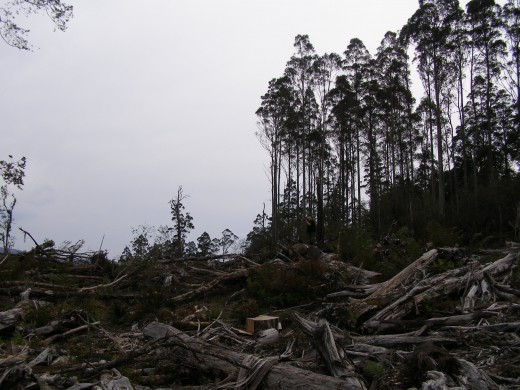
Tasmania’s ancient Styx Forest slaughtered for Malaysian woodchips,
continuing to be subject to Forestry Tasmania holocaust
– utter clearfell followed by blanketed incineration so that the old forest is obliterated forever
– just like what the Nazi’s did to the Jews – out of sight out of mind, until the war was over.
(Photo by editor 20110928, free in public domain, click to enlarge and then click to enlarge again)
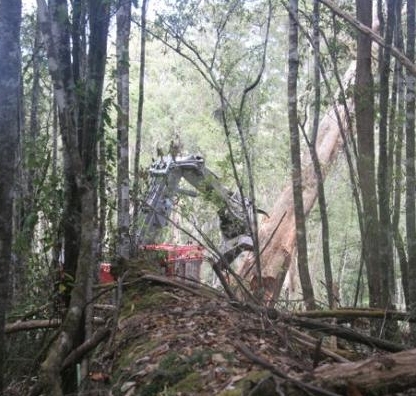
‘Today twelve conservationists have halted a new roading operation in the Styx Valley as part of a ten week campaign to highlight the urgent need for Tasmania’s high conservation value forests to be protected. The recently started roading operation leads to Coupe SX038D and is within a high conservation value area proposed for formal reserve. One protester is in a tree sit, which is attached to roading machinery, preventing any operations from continuing for the day.
.
“The fact that a new road is currently being pushed into high conservation value forest in a area that should have been under moratorium weeks ago, is a clear indication that Forestry Tasmania are not taking appropriate action to reschedule coupes and implement the moratorium” said Miranda Gibson, spokesperson from Still Wild Still Threatened.
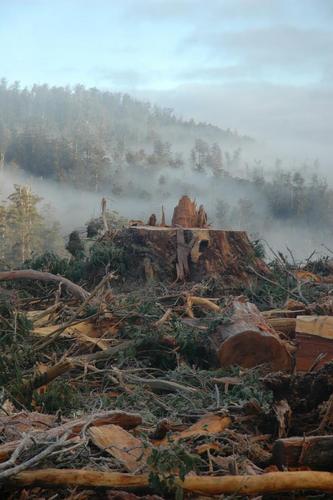
“How can the Tasmanian community have faith in Forestry Tasmania when they have not only failed to meet the moratorium deadline, but are now blatantly disregarding government directive to reschedule coupes? If Forestry Tasmania were serious about implementing the moratorium, they certainly would not be wasting taxpayers money investing in brand new roads to access iconic forests that have been earmarked for protection.” said Ms Gibson.’
.
[Source: Still Wild Still Threatened, 20110412, ^http://www.stillwildstillthreatened.org/main-categories/current-news]
.
 Maranda Gibson, defender of Tasmania’s forest heritage Maranda Gibson, defender of Tasmania’s forest heritage
One of the arrested protesters on the Opera House last Saturday
.
 . .
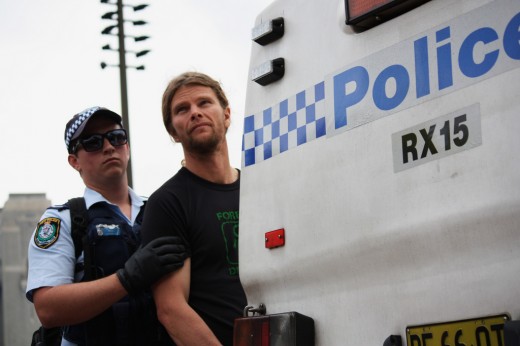 Prepared to be arrested for Tasmanian principle Prepared to be arrested for Tasmanian principle
.
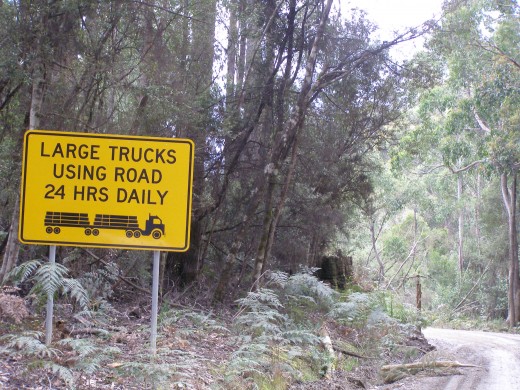 Styx Valley
Tasmania’s remaining wild forests..disappearing by Styx Valley
Tasmania’s remaining wild forests..disappearing by
…LARGE TRUCKS USING ROAD 24 HRS DAILY
.
.
Legal Sequel: ‘Opera House abseilers fined $200’
.
[Source: Sydney Morning Herald, 20111109, ^http://www.smh.com.au/environment/conservation/opera-house-abseilers-fined-200-20111109-1n6vv.html]
.
‘Three activists who scaled the Opera House, unfurling a banner bagging a retail giant, have been fined in a Sydney court. Miranda Gibson, 30, and Roseanne Phillips, 22, scaled the landmark on October 8 and abseiled from the western side of its western sail.
They unfurled a 10 by 12-metre yellow banner stating:
“No Harvey No! Stop selling Aussie forest destruction”
.
Scott Mackenzie, 37, also climbed to the top of the building carrying the banner on his back, but remained on the peak. They each pleaded guilty, in Downing Centre Local Court today, to a count of trespassing. Magistrate Janet Wahlquist fined them $200 each, plus court costs.
.
Outside court, Gibson, from the protest group The Last Stand, said the protesters had achieved their goal.
“We took action to bring the plight of our great and iconic native forests to another great Australian icon in the heart of Sydney, and to send a clear message to Harvey Norman that profiting from Aussie forest destruction is no way to do business in this day and age,”
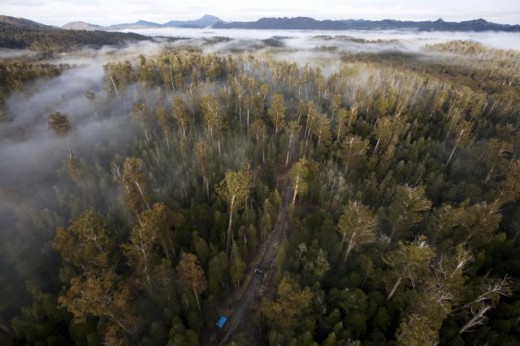
.
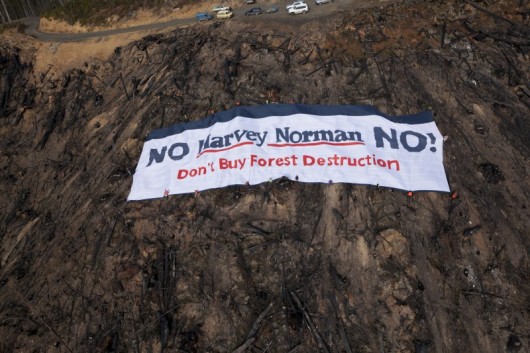 . .
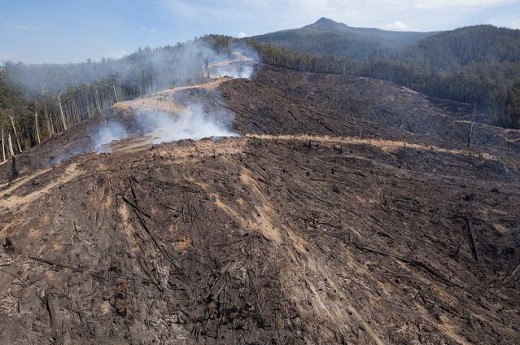 . .
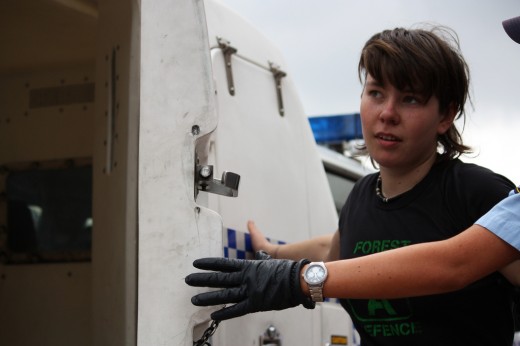 Fined $200 in NSW to dare to protest against destruction of Tasmania’s ancient native forests Fined $200 in NSW to dare to protest against destruction of Tasmania’s ancient native forests
.
.
The Last Stand has singled out Harvey Norman after a year-long investigation into its timber usage which, the protesters say, was contributing to the destruction of native forests.
They claim to have tracked timber from native forests in Australia through its shipment to China for processing into furniture, and then to its final sale in Australia through Harvey Norman stores.The store has previously said it was being unfairly targeted and did its best to source timber from sustainable sources.’
.
When will Gerry Harvey come clean on his personal profiting from native forests?
GO…search your morals Gerry Harvey!
 Tasmanian Devil
(Photo by Matthew Stewart, Flickr). Tasmanian Devil
(Photo by Matthew Stewart, Flickr).
.
Tags: a desperate cry, EKO Wood, forest network, Forestry Holocaust, Forestry Tasmania, Gerry Harvey, Go Harvey Norman, Go search your morals Gerry Harvey, Harvey Norman, Harvey Norman Flooring, Naturally Australian, No Harvey No, Still Wild Still Threatened, Stop selling Aussie forest destruction, Styx Valley, Sydney Opera House, The Last Stand
Posted in Tasmania (AU), Threats from Deforestation, Threats to Wild Tasmania | No Comments »
Add this post to Del.icio.us - Digg
|
|
 Unprotected ancient native forests around Tasmania’s Recherche Bay
Unprotected ancient native forests around Tasmania’s Recherche Bay Forestry Tasmania getting stuck into native forests near Tasmania’s Recherche Bay, May 2011
[Source: ABC, ‘Bid for forest peace funding’, 20110519, ^http://www.abc.net.au/news/stories/2011/05/18/3220585.htm?site=hobart]
Forestry Tasmania getting stuck into native forests near Tasmania’s Recherche Bay, May 2011
[Source: ABC, ‘Bid for forest peace funding’, 20110519, ^http://www.abc.net.au/news/stories/2011/05/18/3220585.htm?site=hobart]
 Loaded logging truck (New Norfolk, 20110929)
(Photo by editor, free in public domain)
Loaded logging truck (New Norfolk, 20110929)
(Photo by editor, free in public domain)
 Tasmanian Premier Lara Giddings and Australian Prime Minister Julia Gillard
signing the Tasmanian Forests Agreement, 7th August 2011
Tasmanian Premier Lara Giddings and Australian Prime Minister Julia Gillard
signing the Tasmanian Forests Agreement, 7th August 2011
 Forestry Tasmania’s cable logging of The Weld Forest, 2009
Tasmanian Southern Forests
(Huon Valley Environment Centre)
(click image to link to slide show)
Forestry Tasmania’s cable logging of The Weld Forest, 2009
Tasmanian Southern Forests
(Huon Valley Environment Centre)
(click image to link to slide show)


























































































